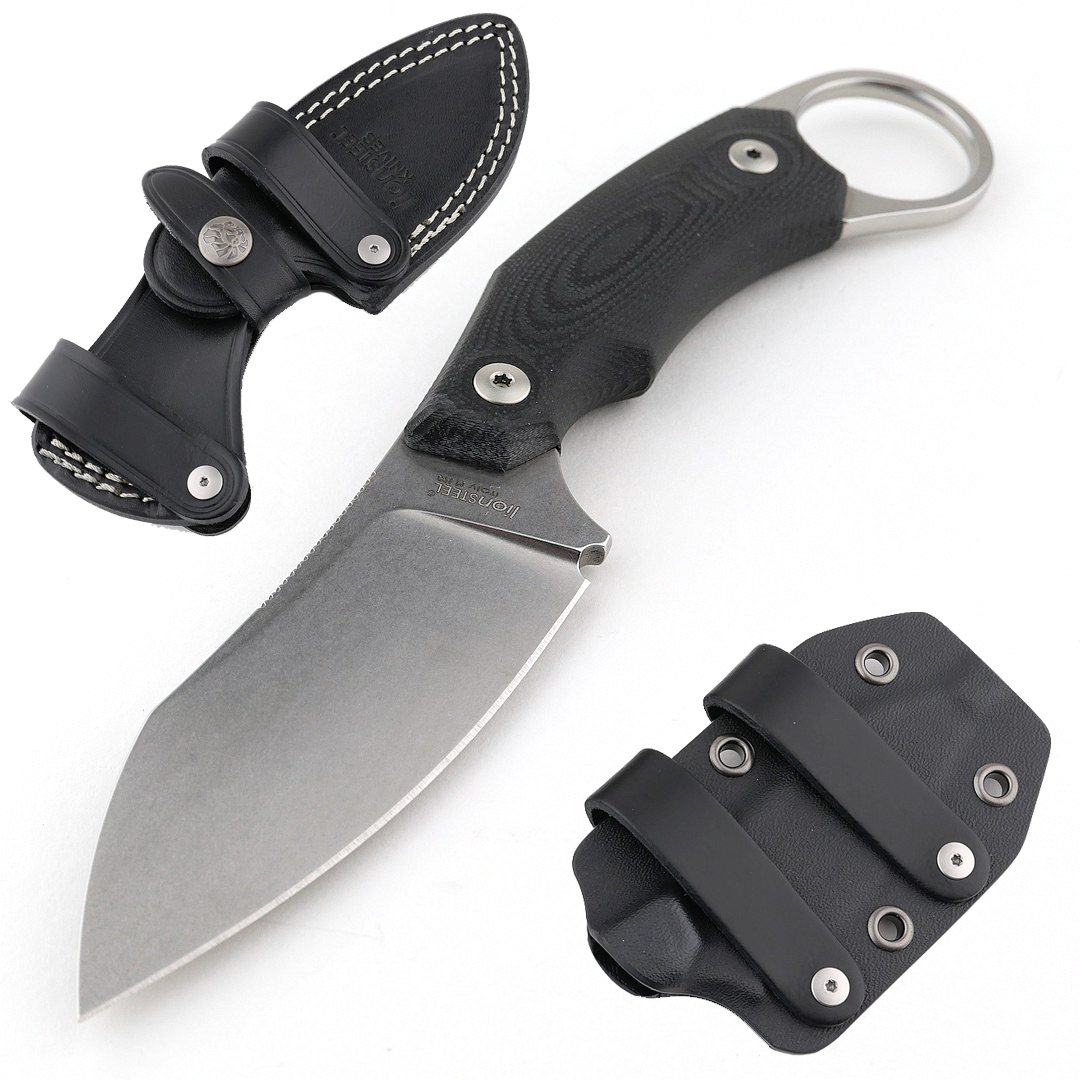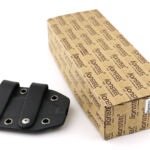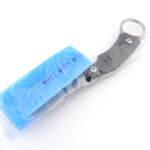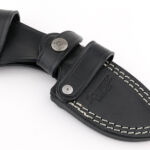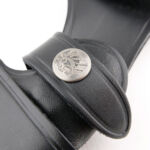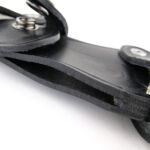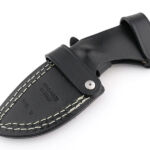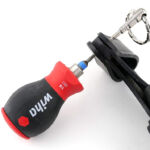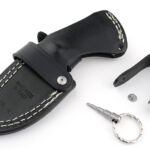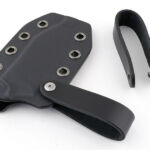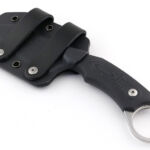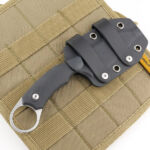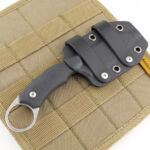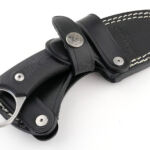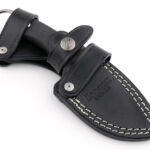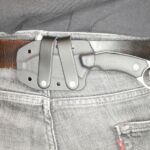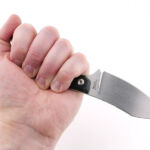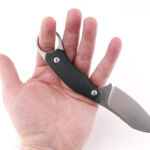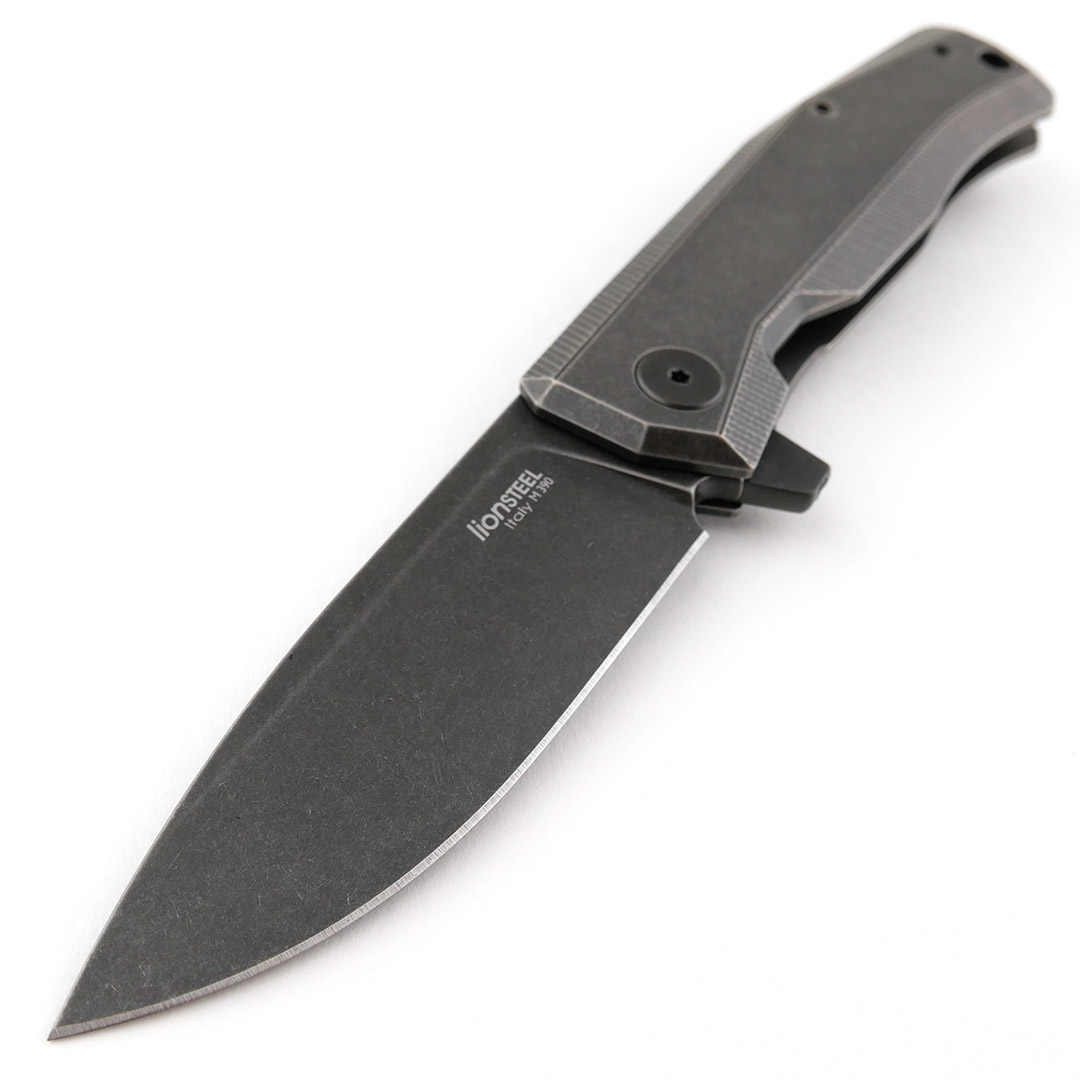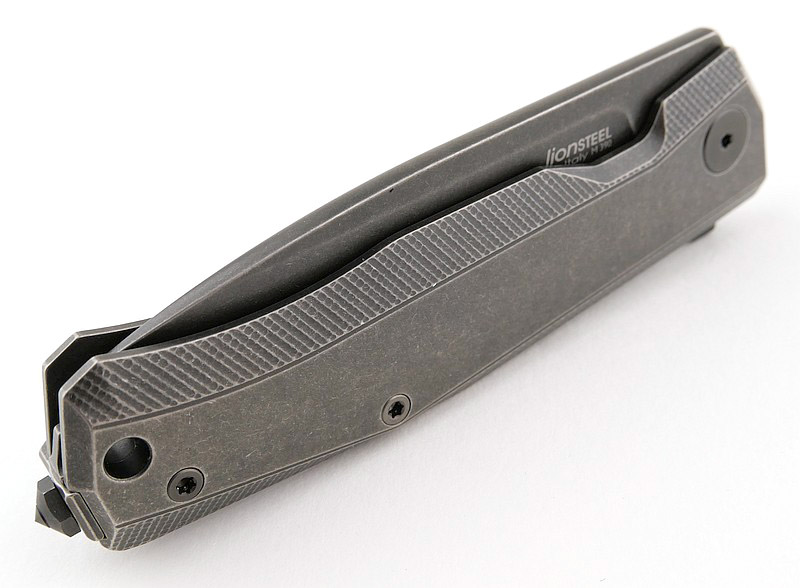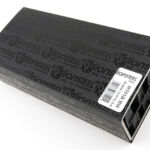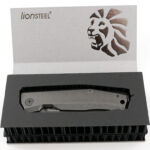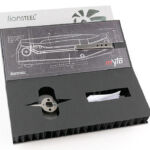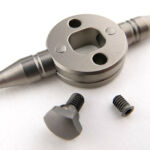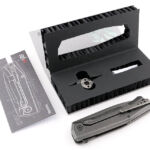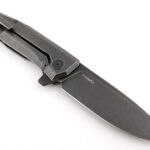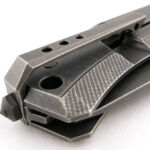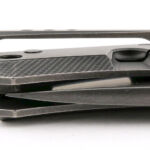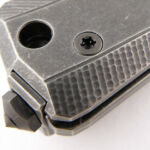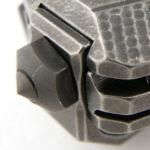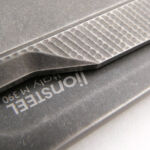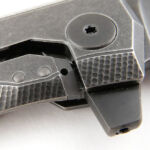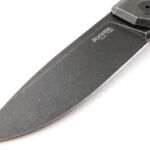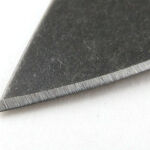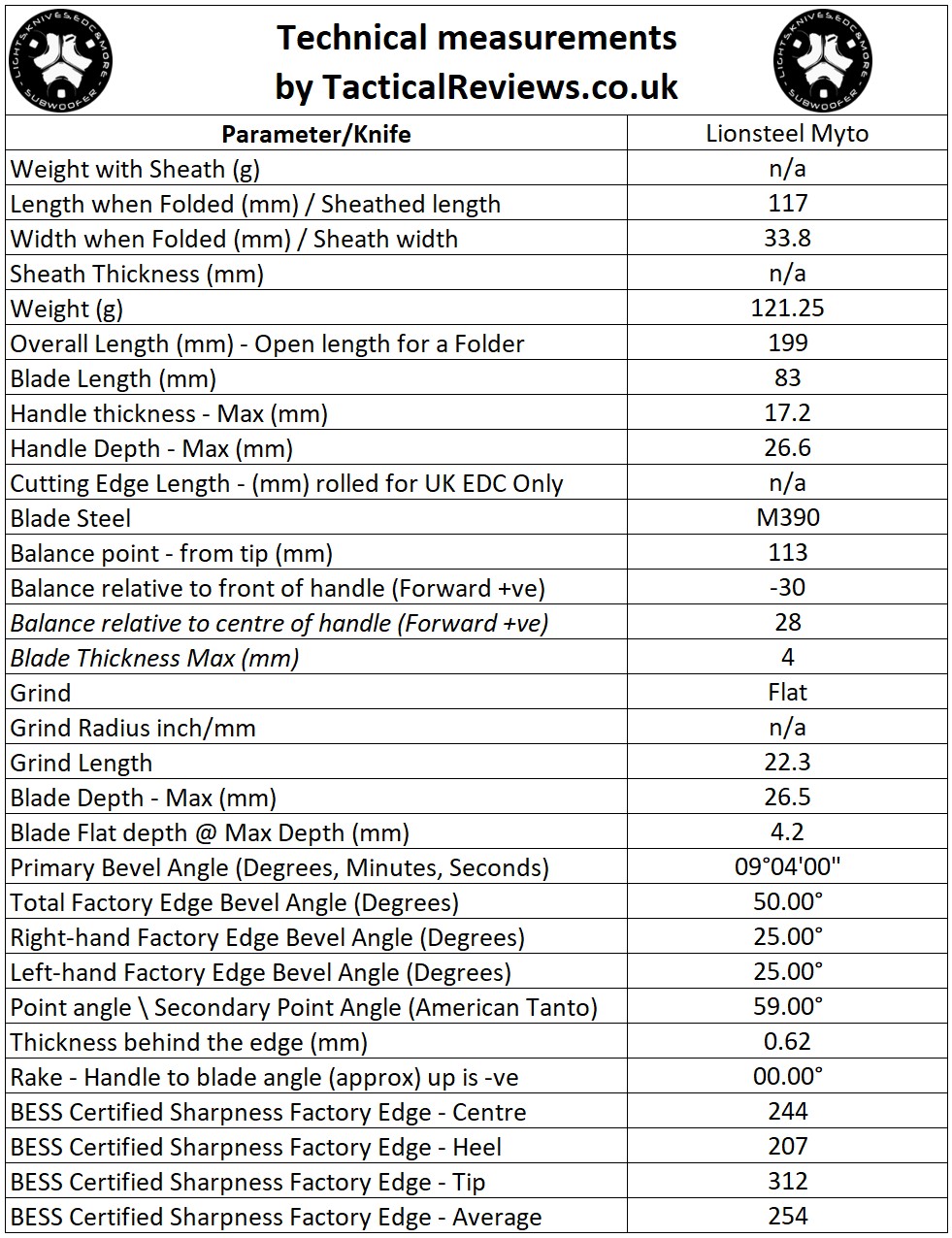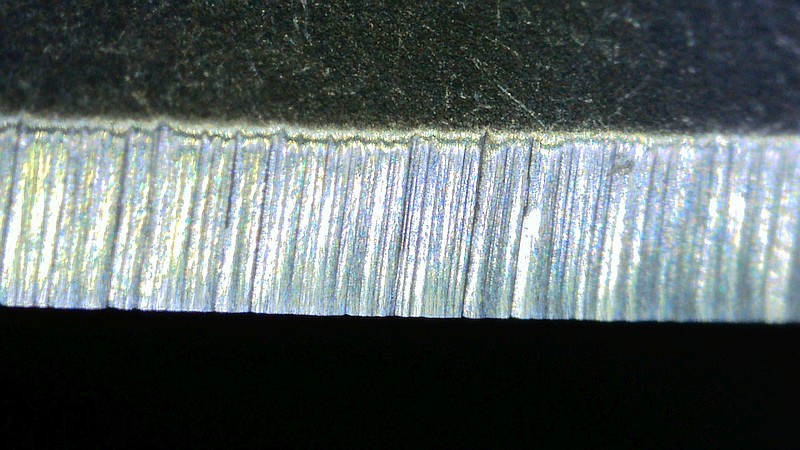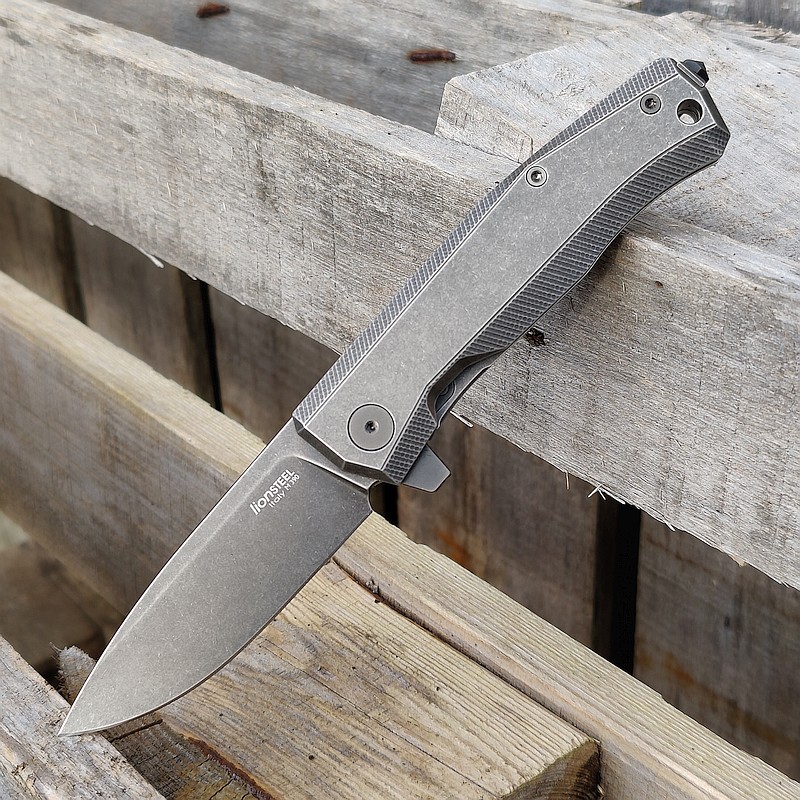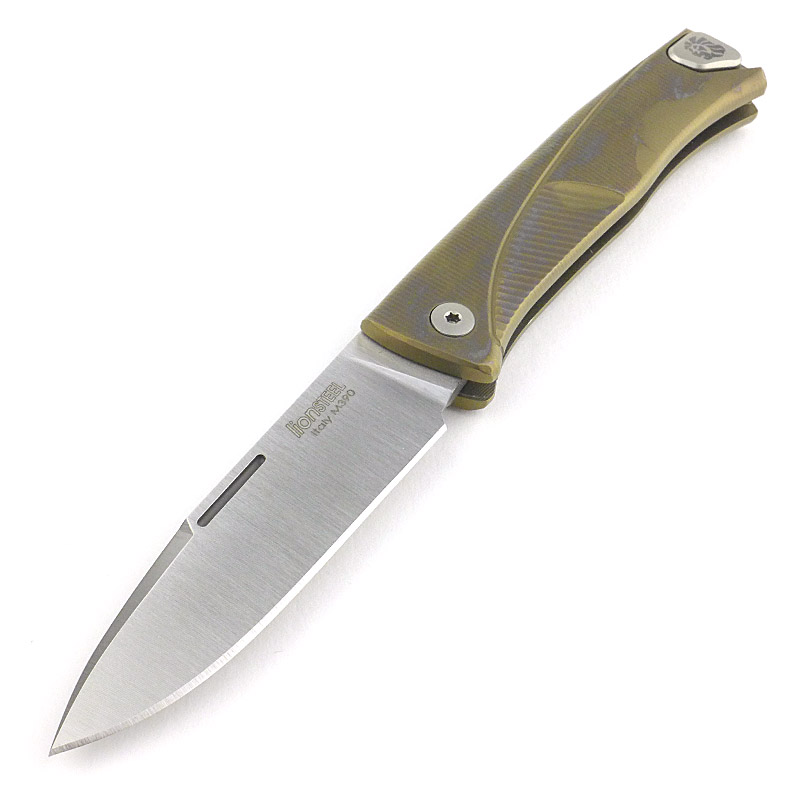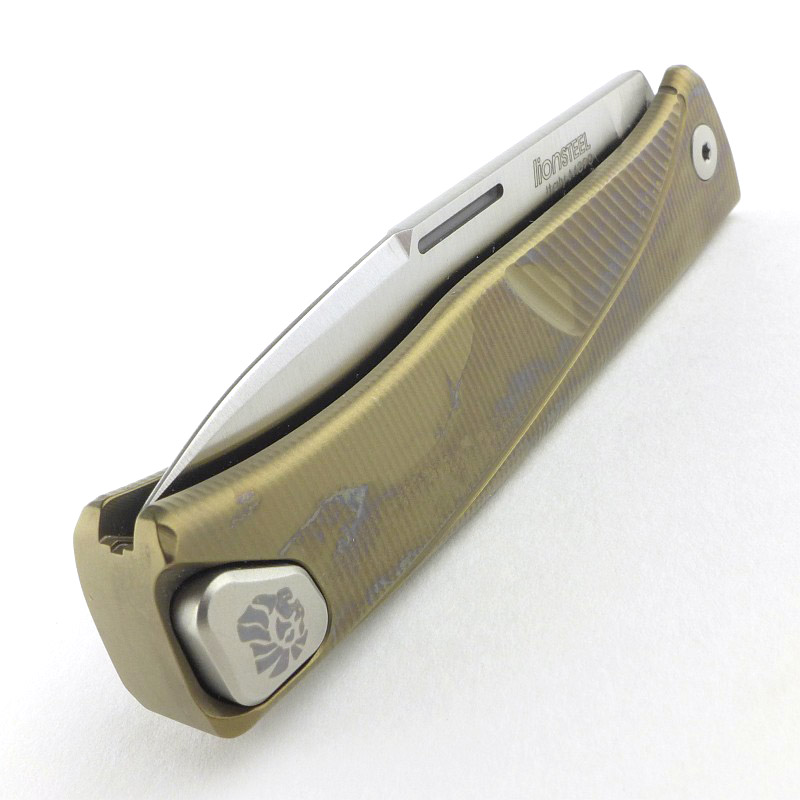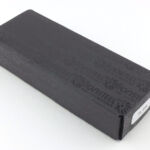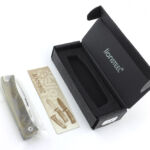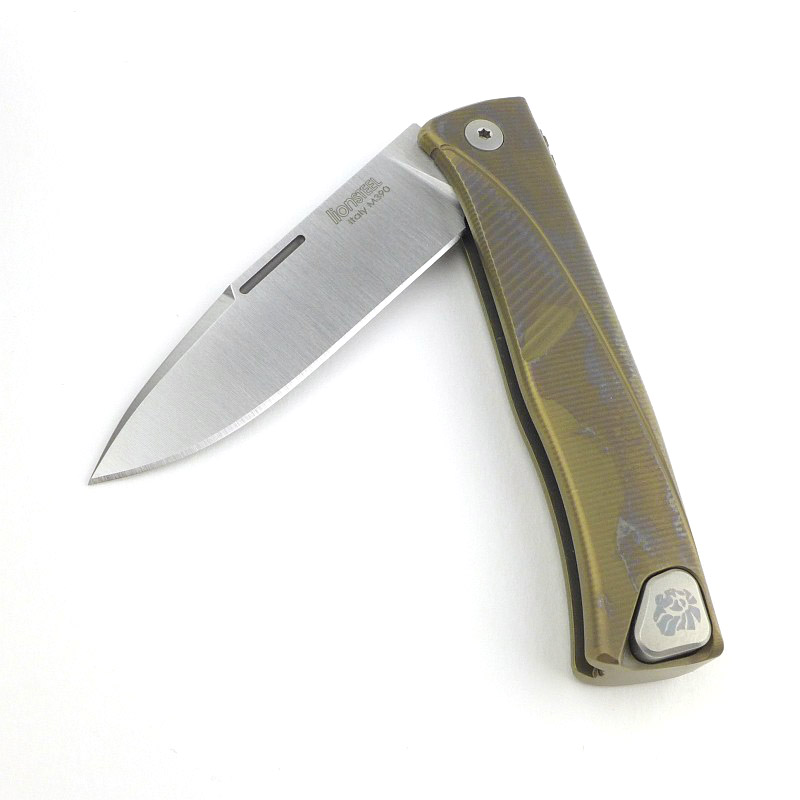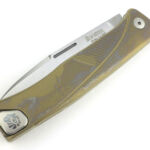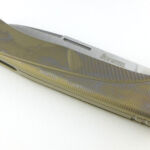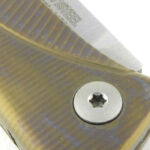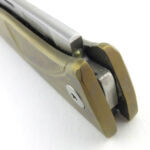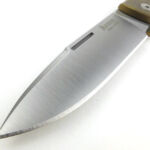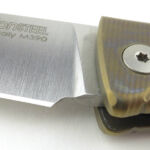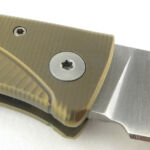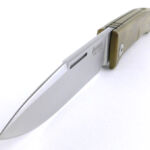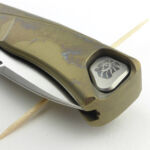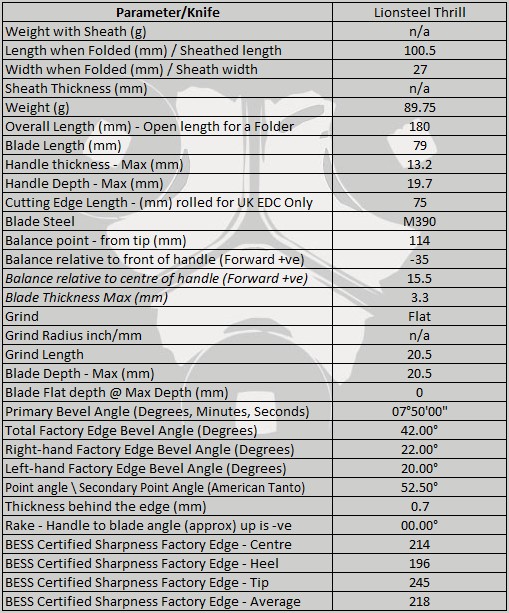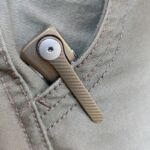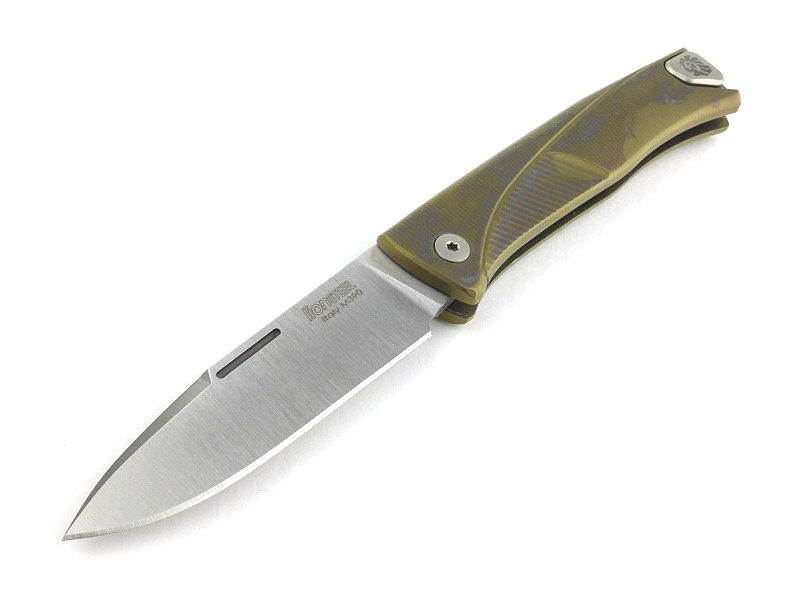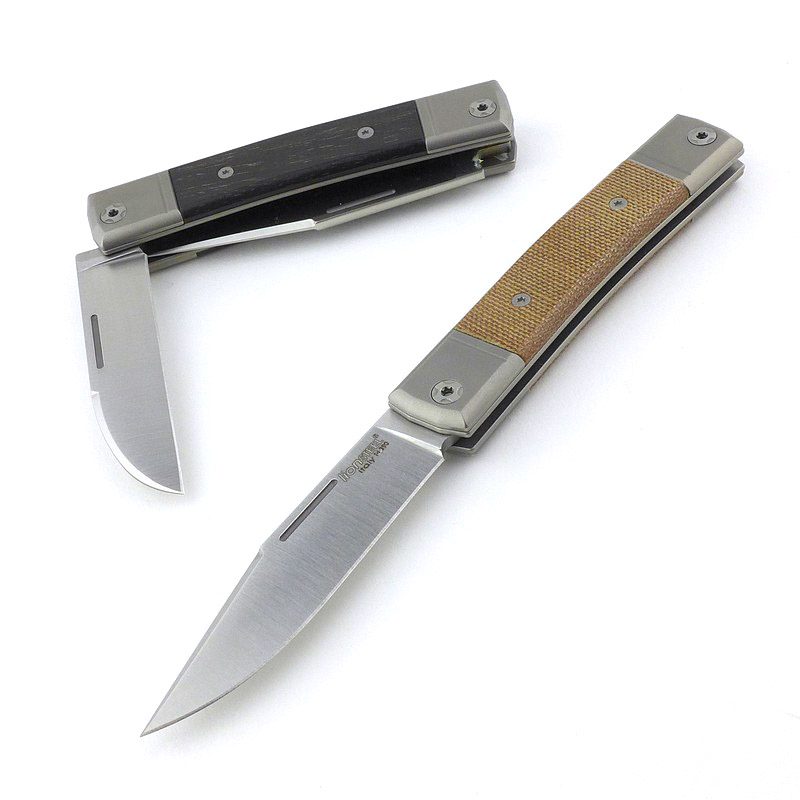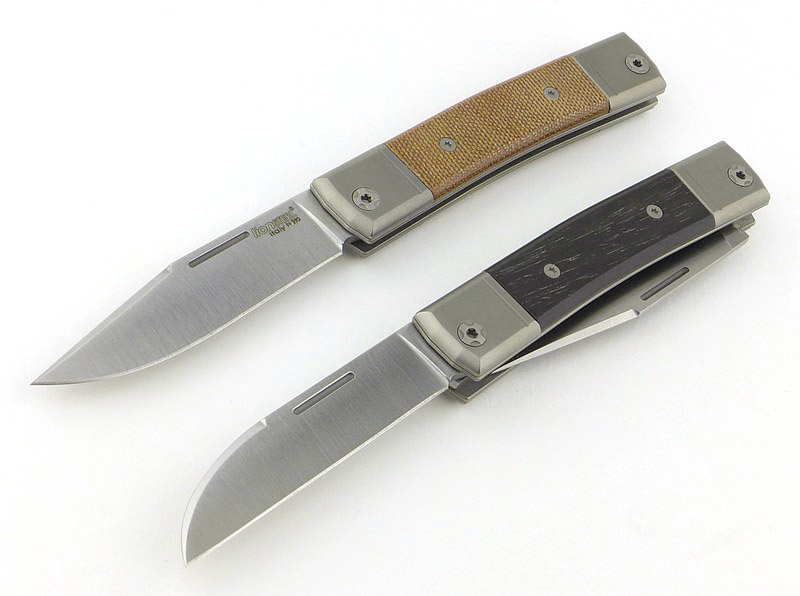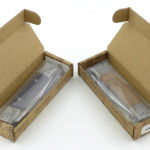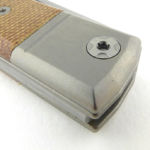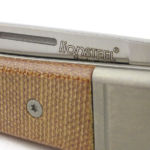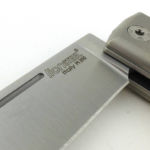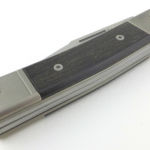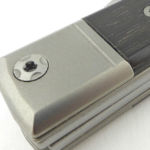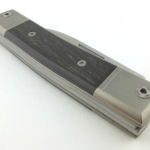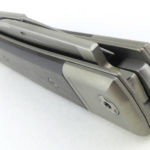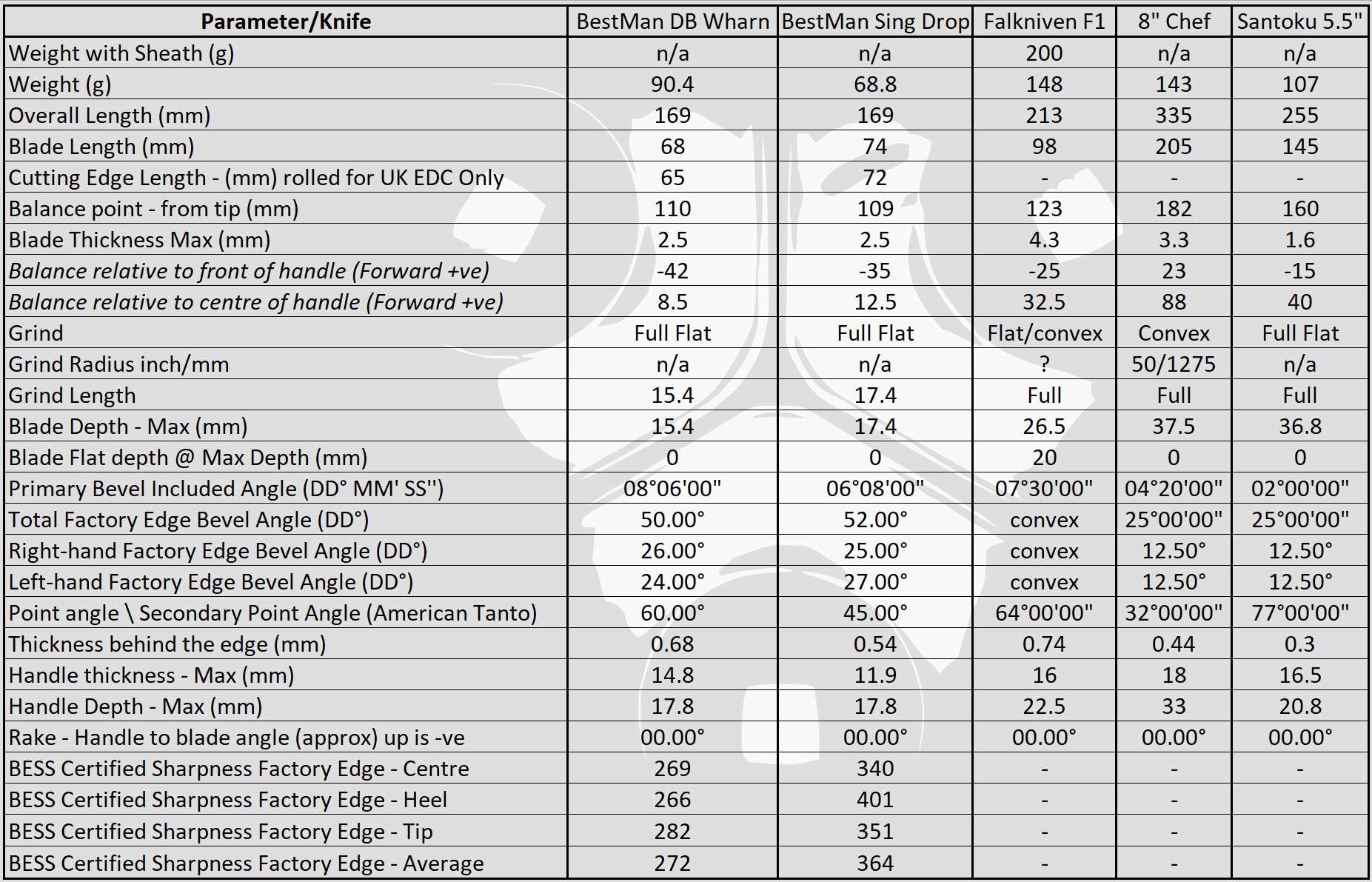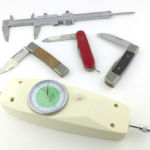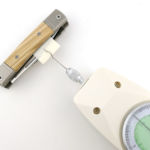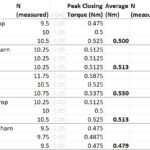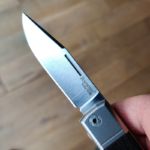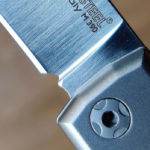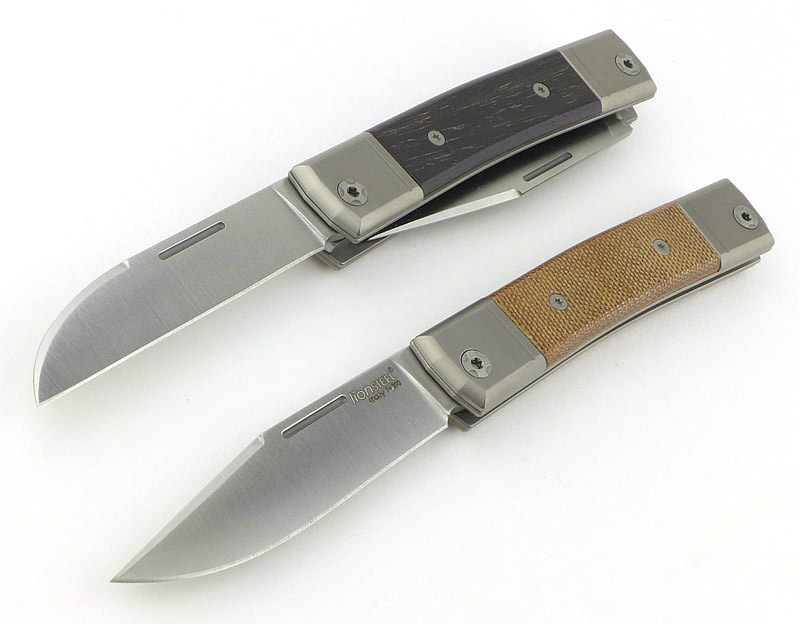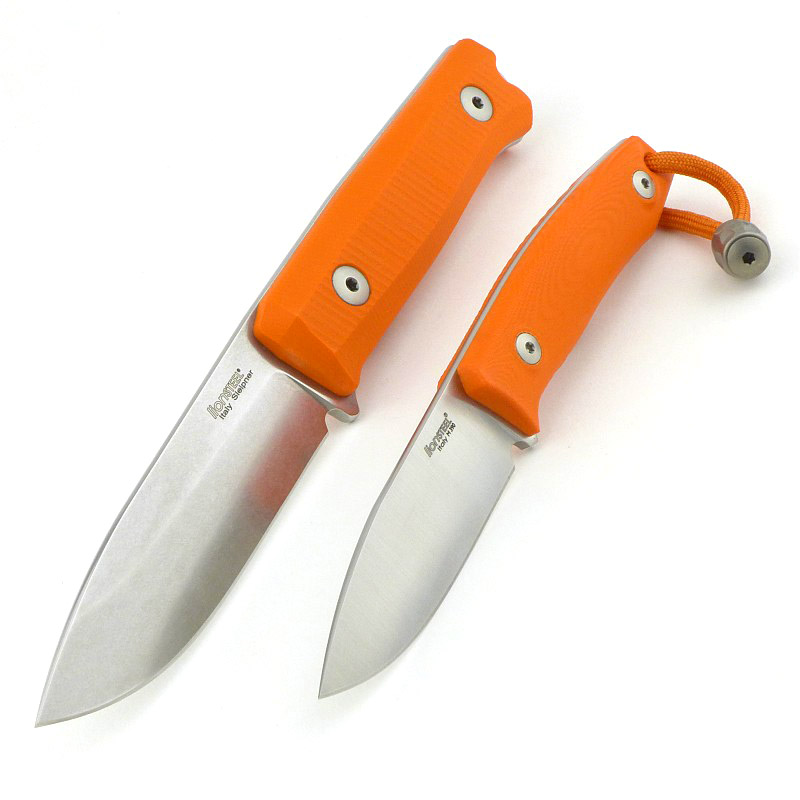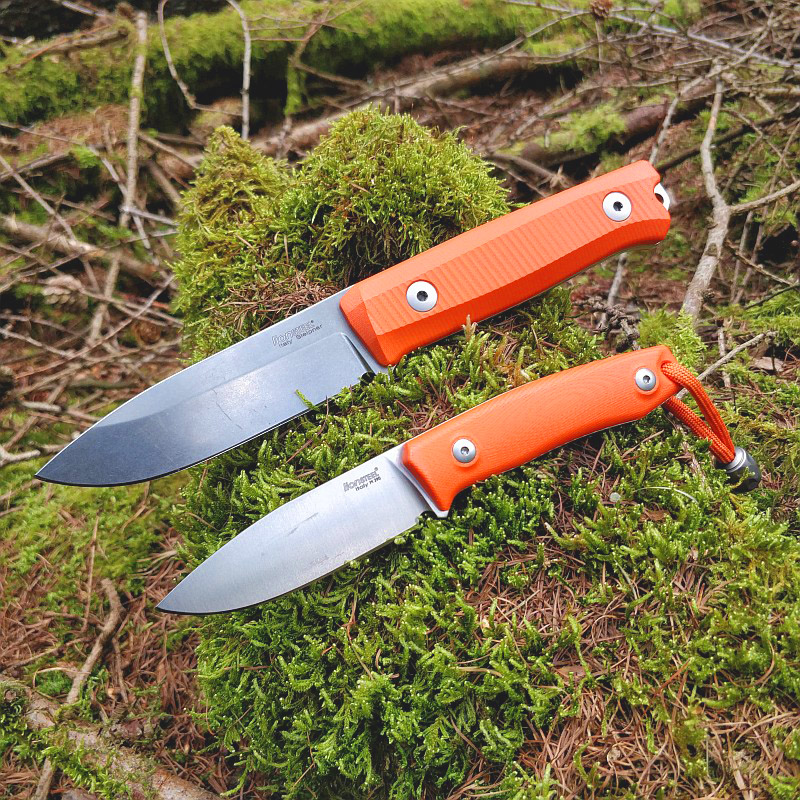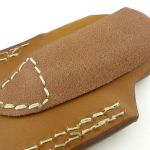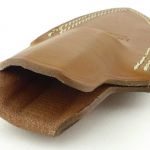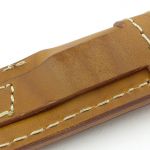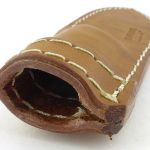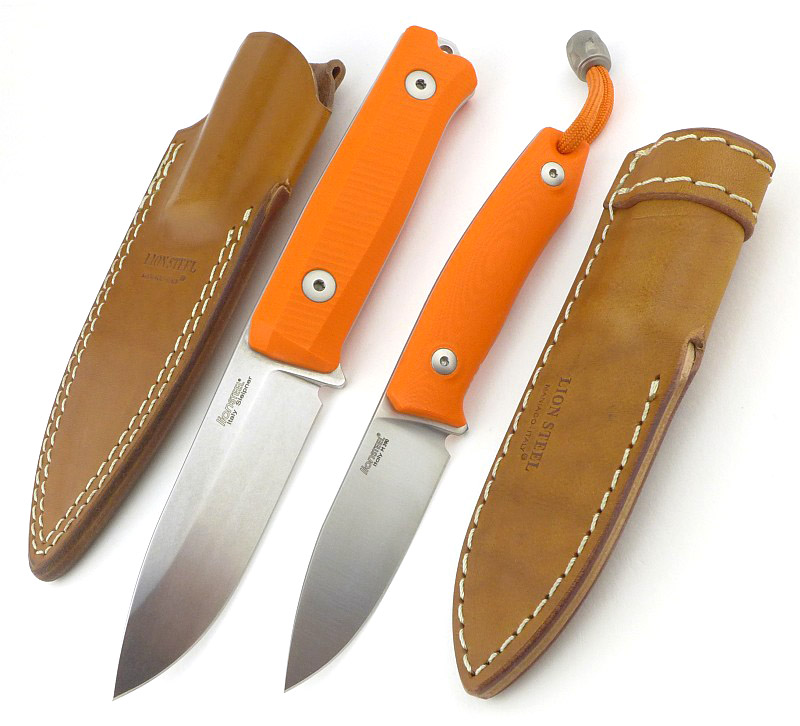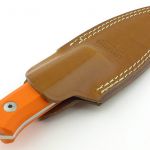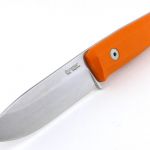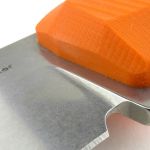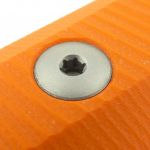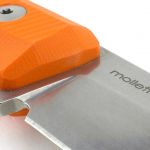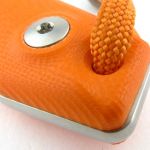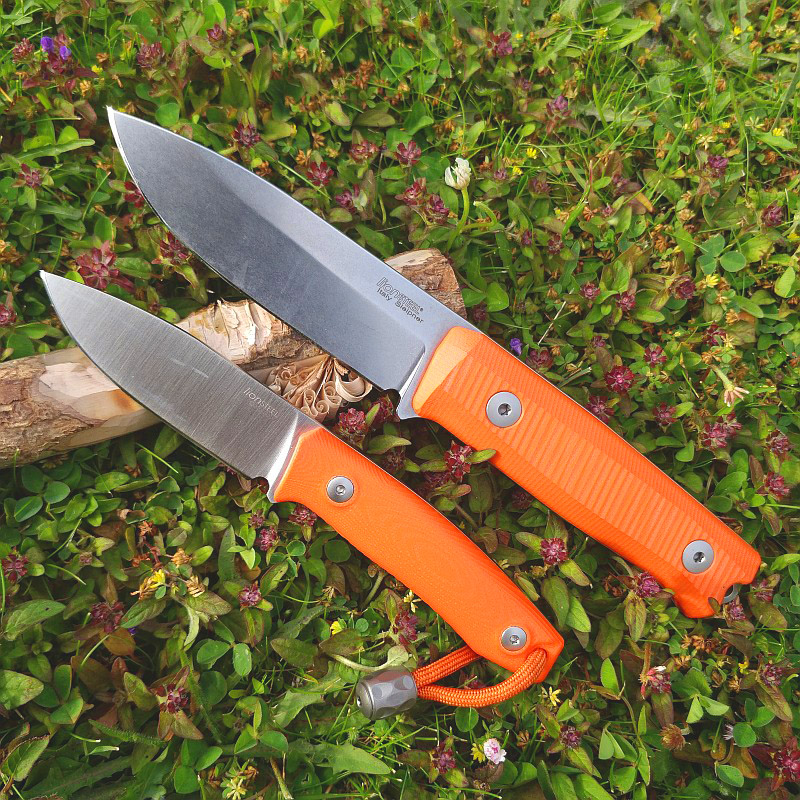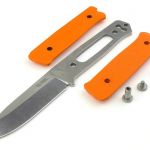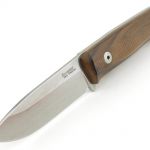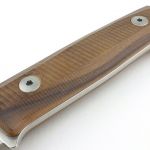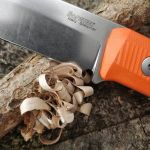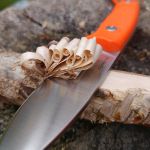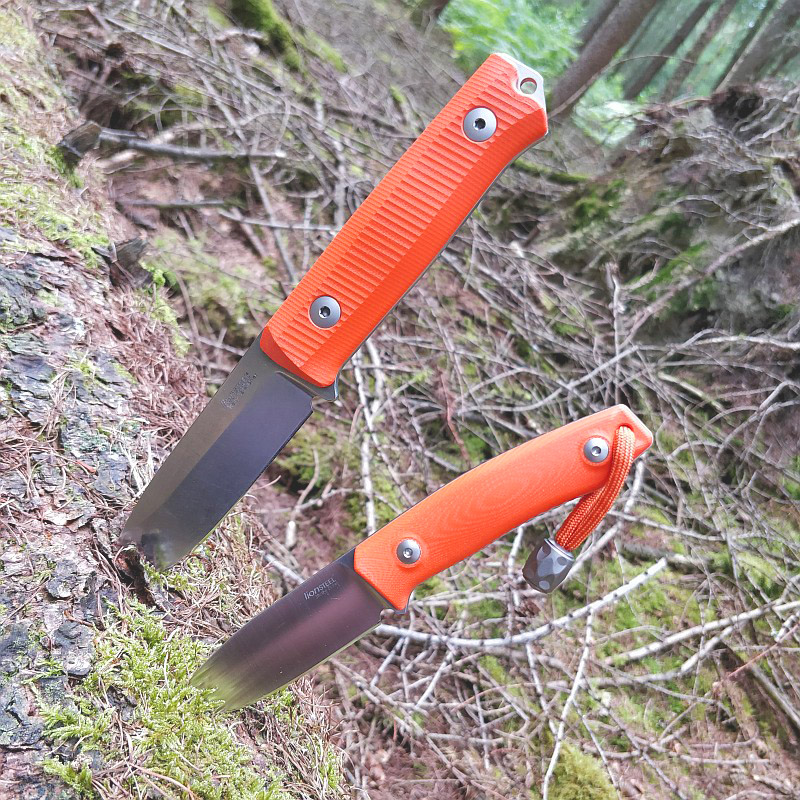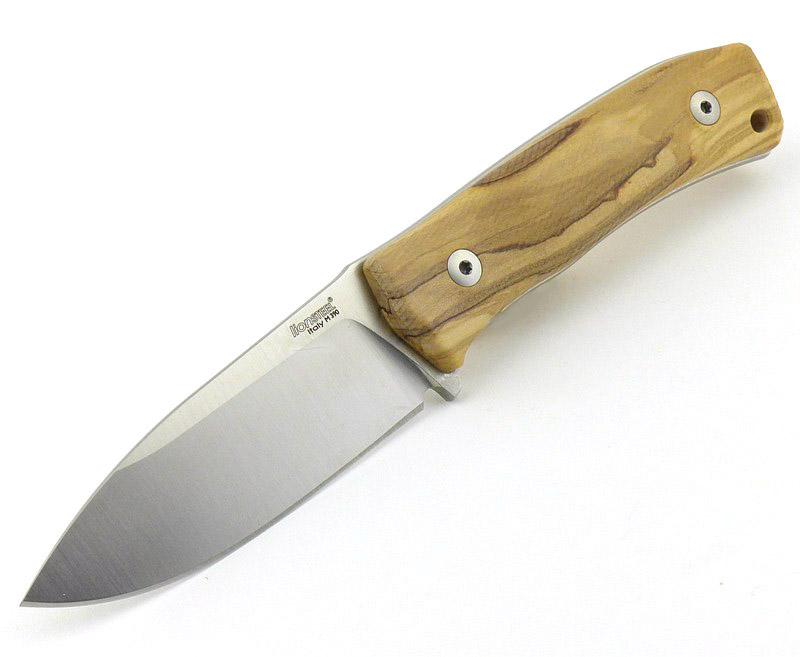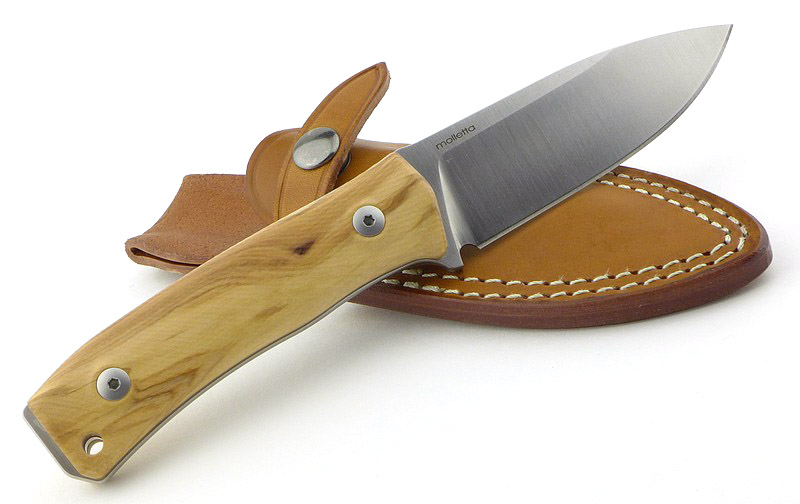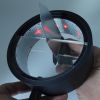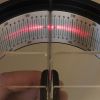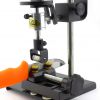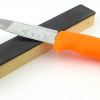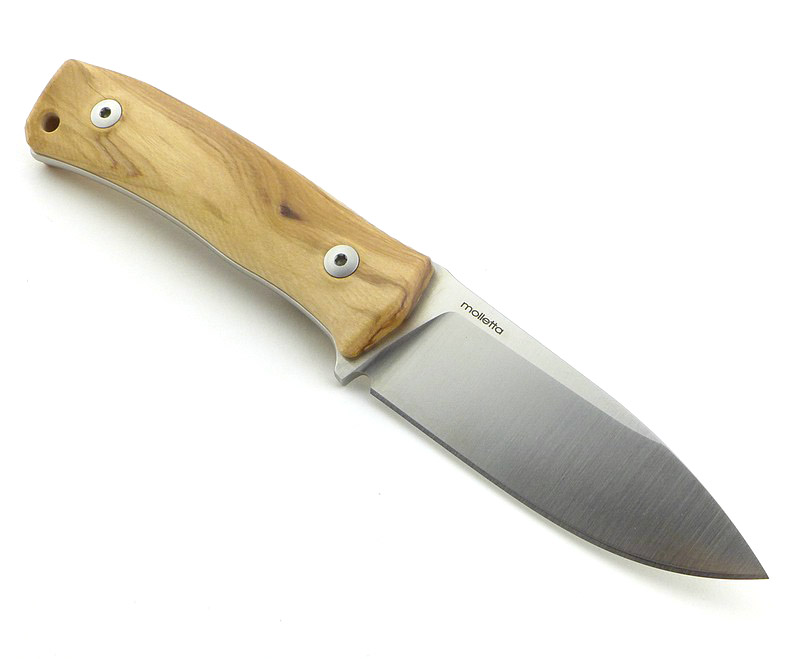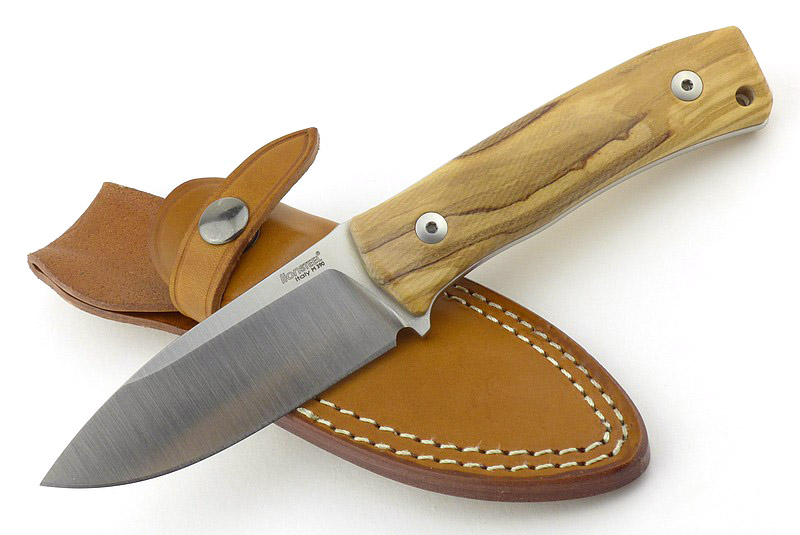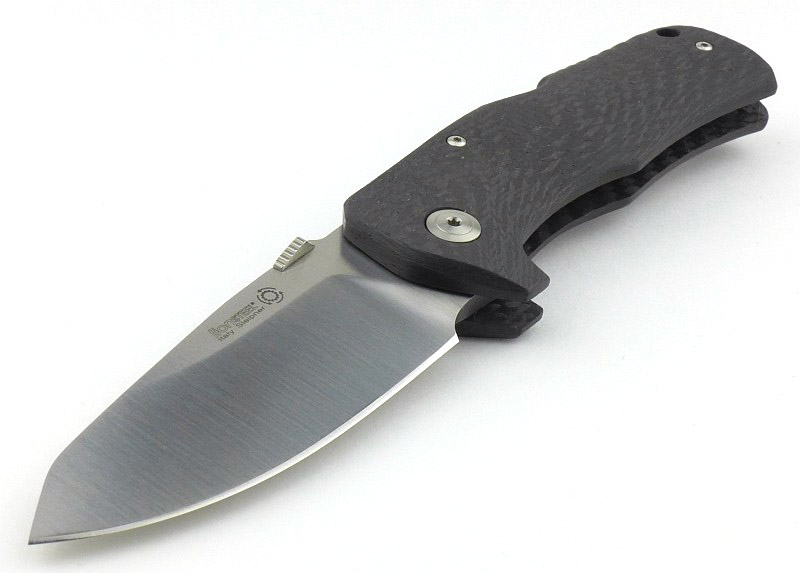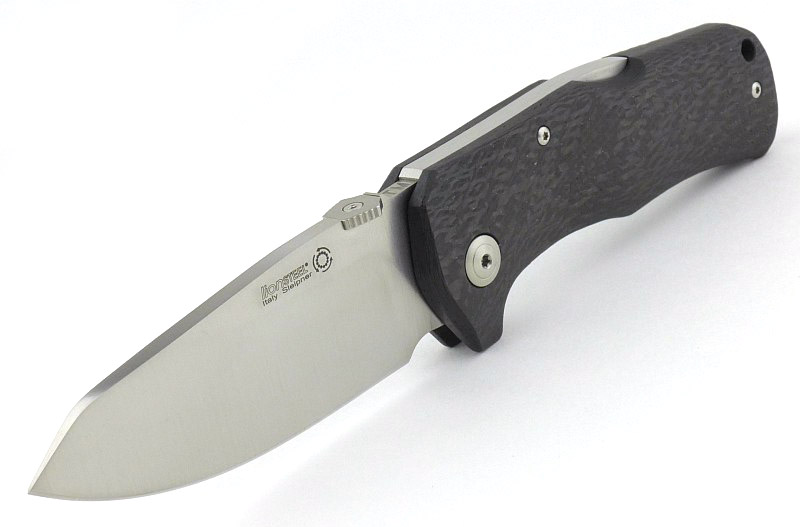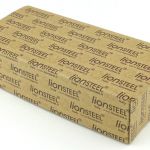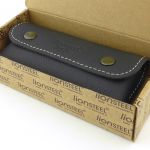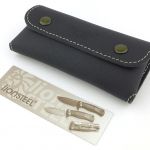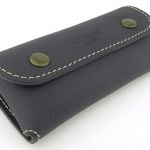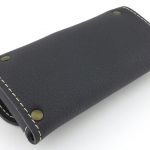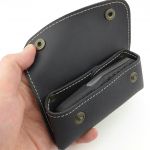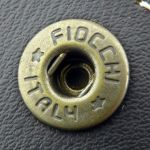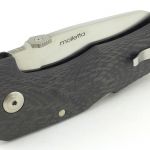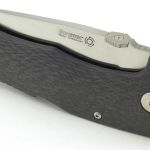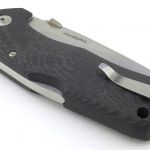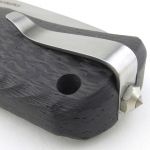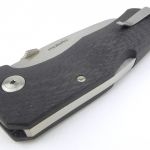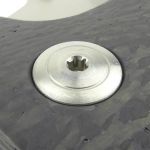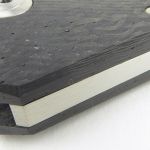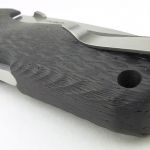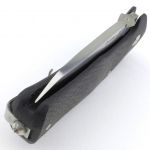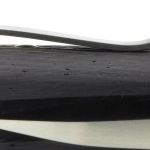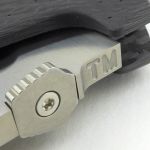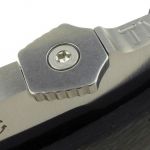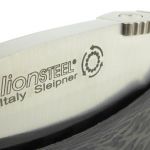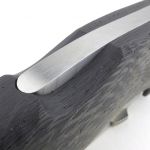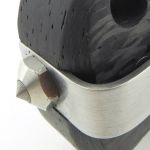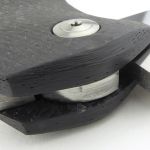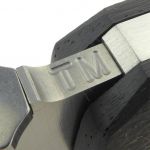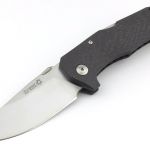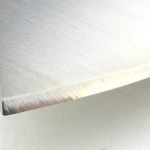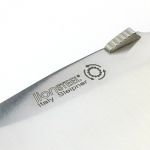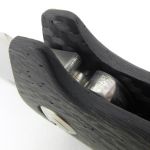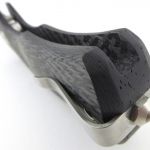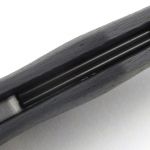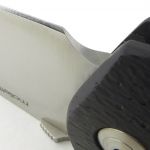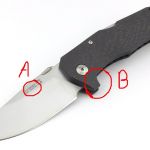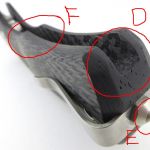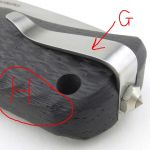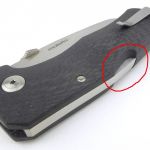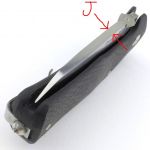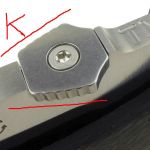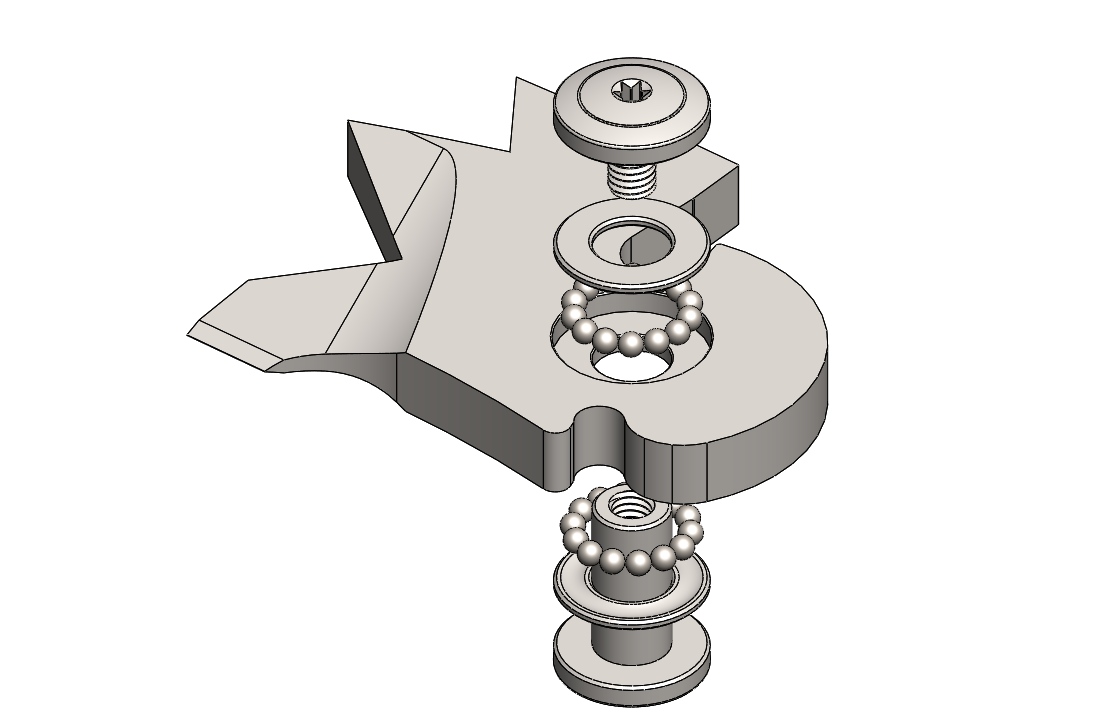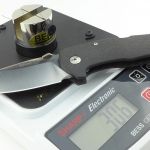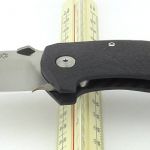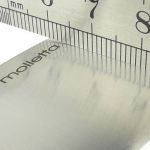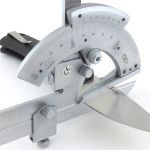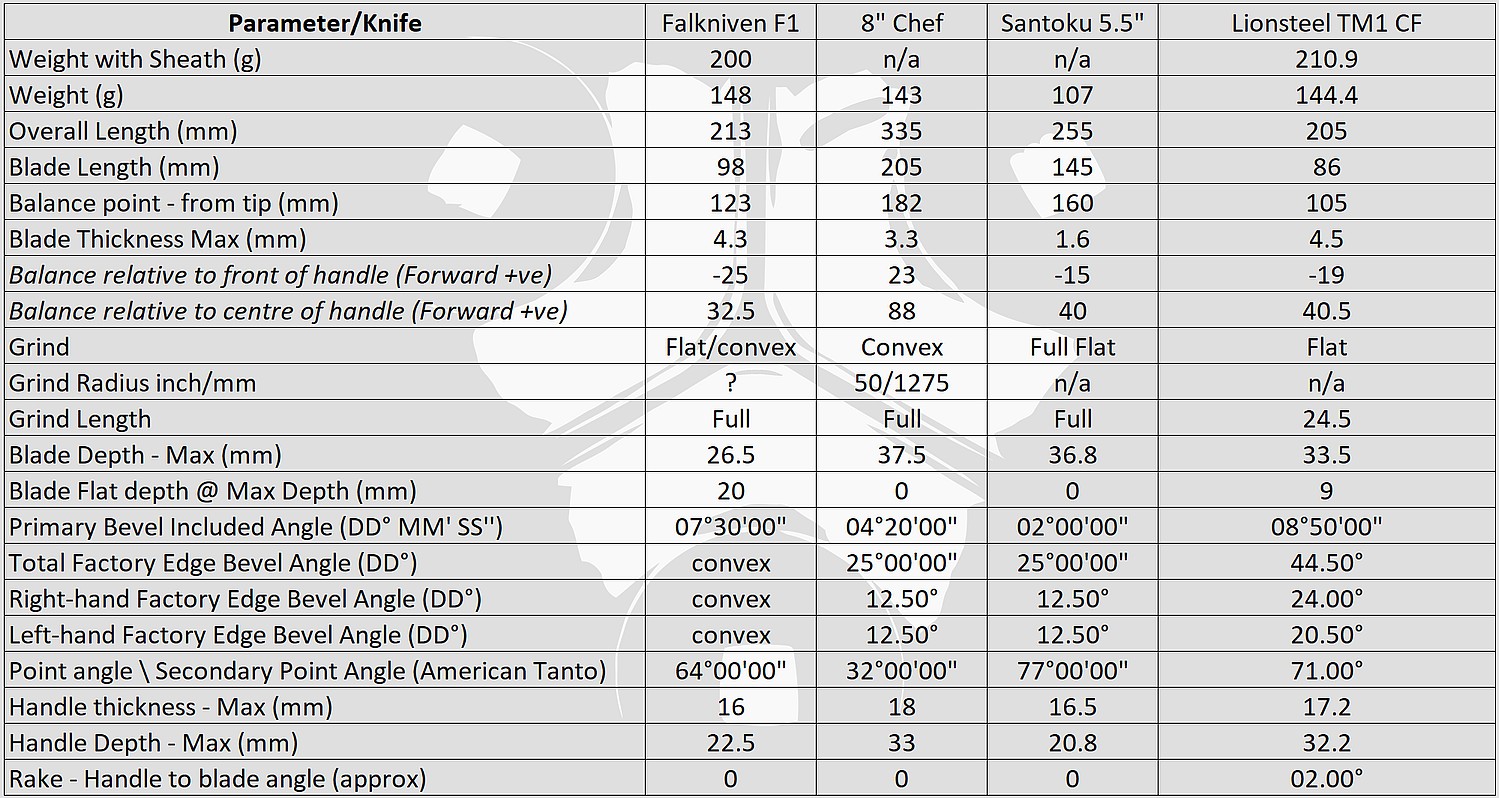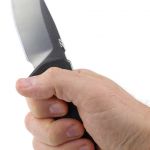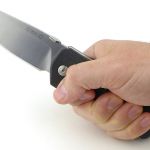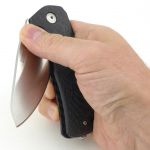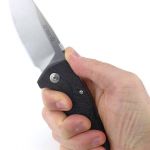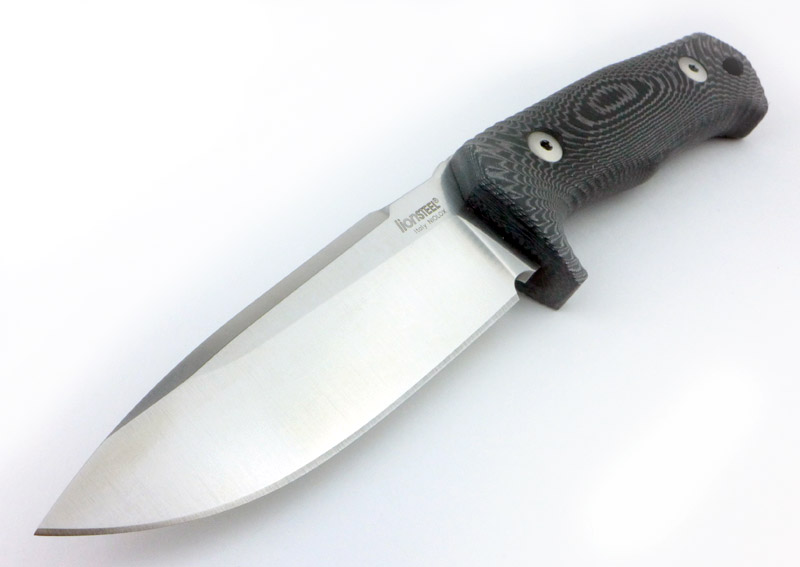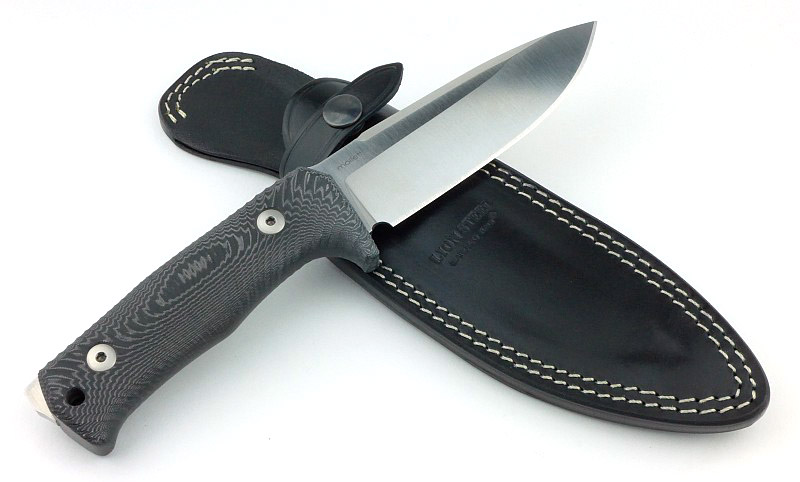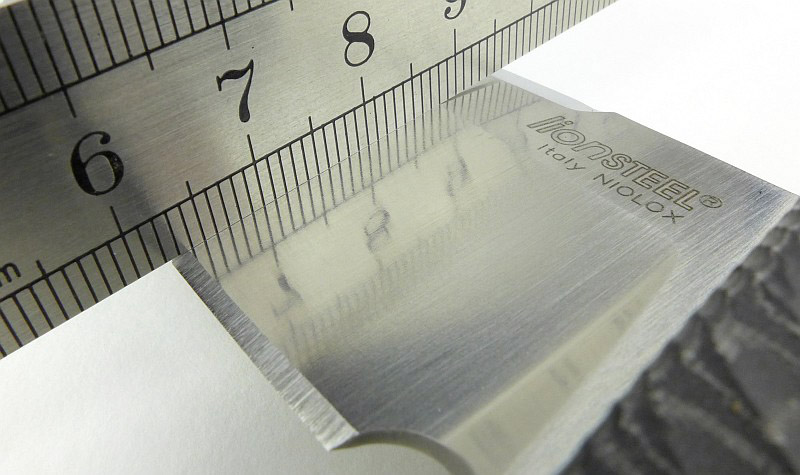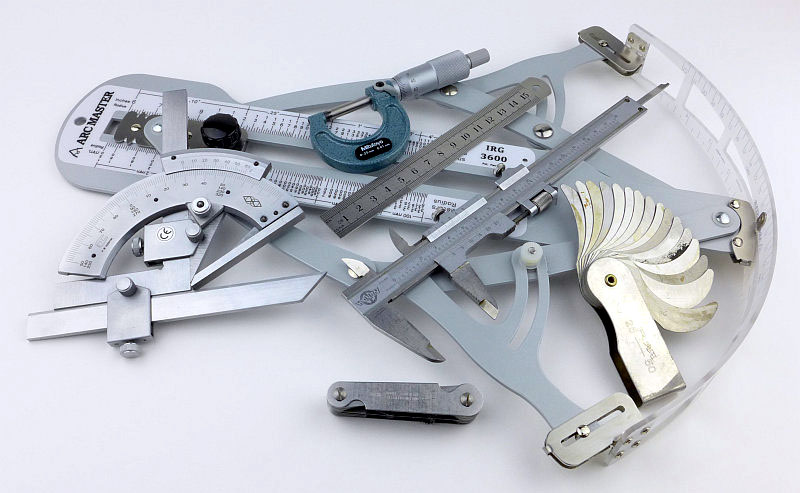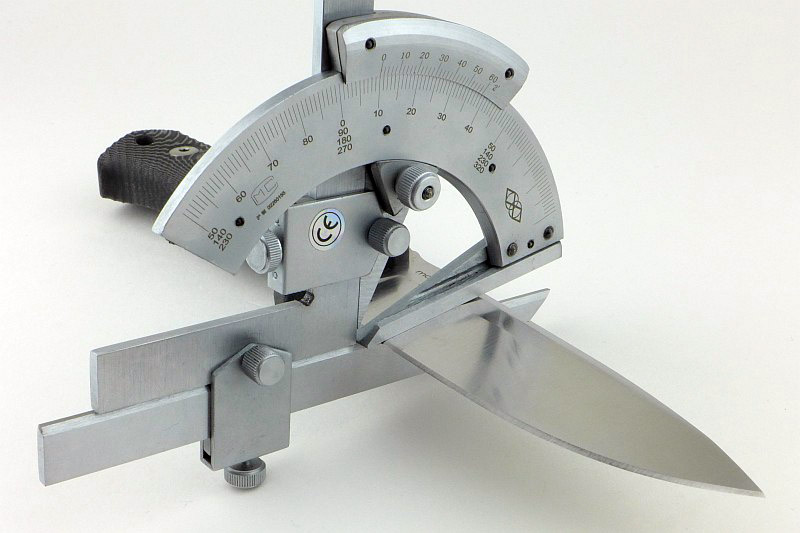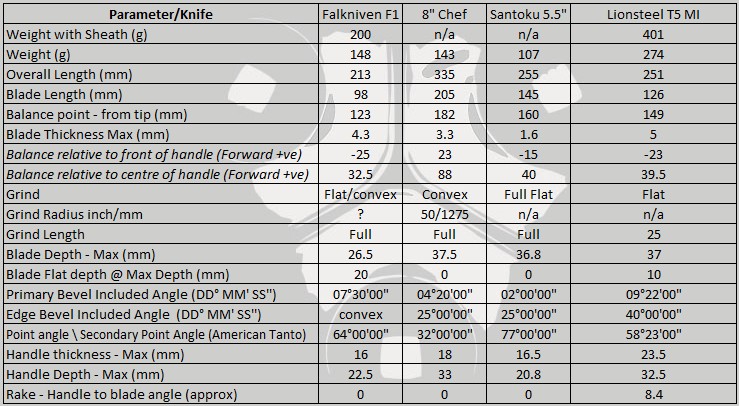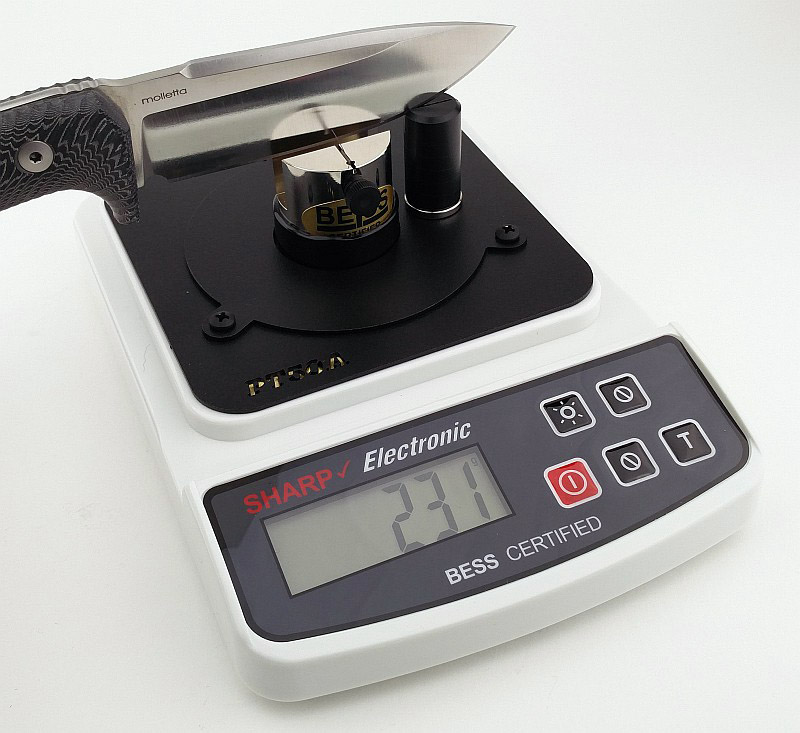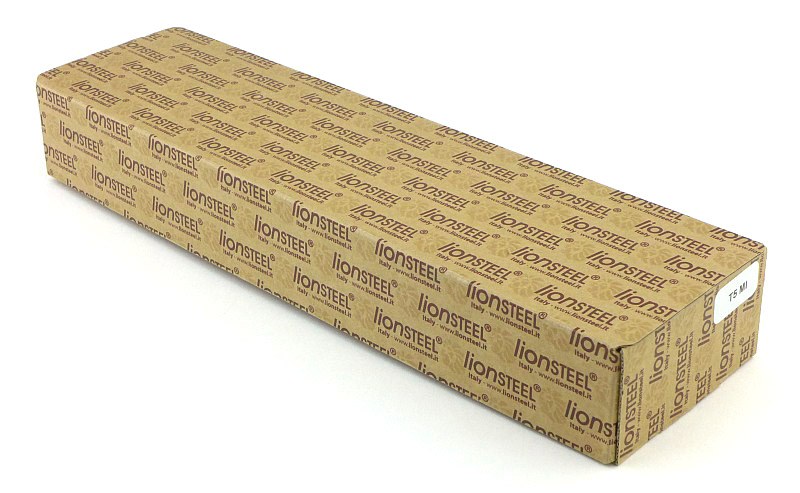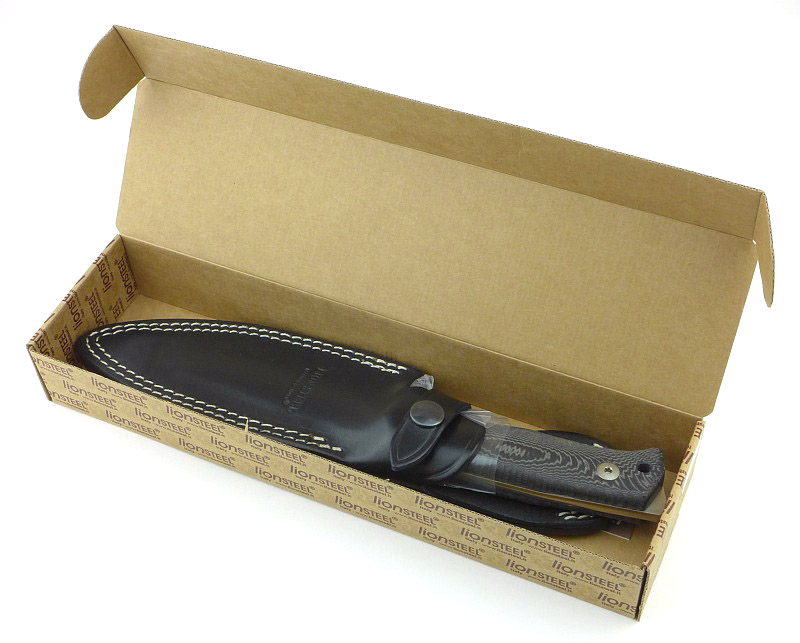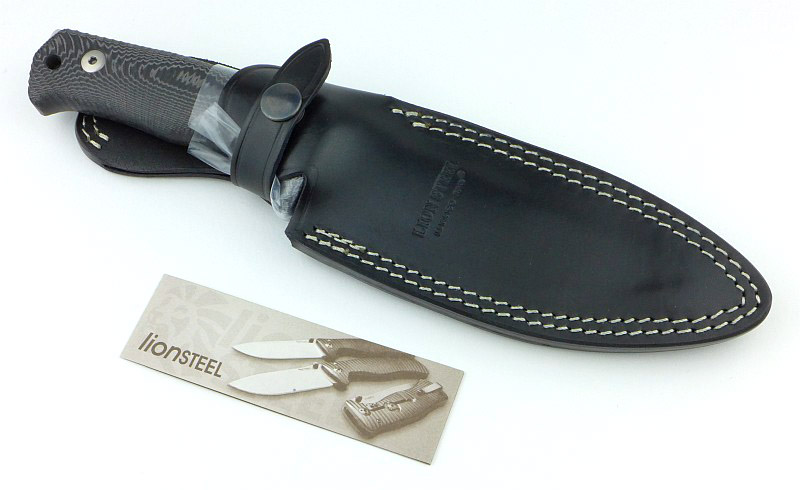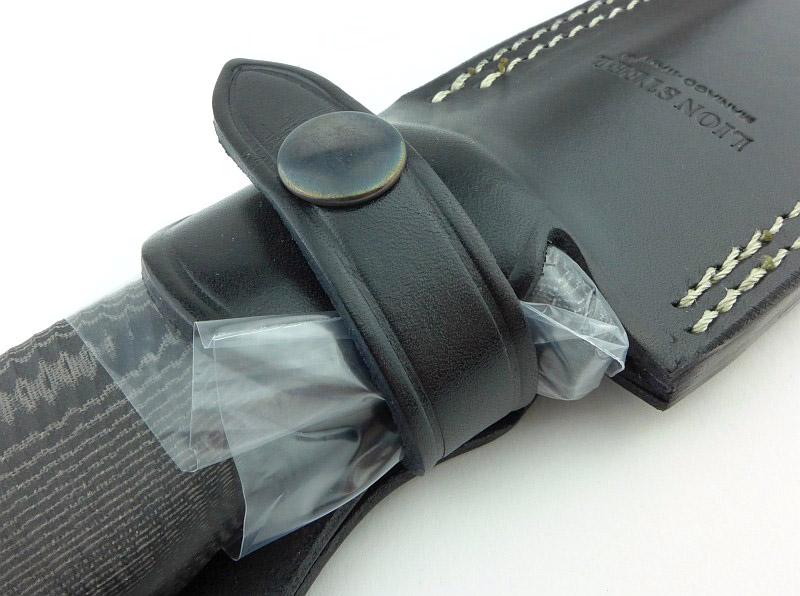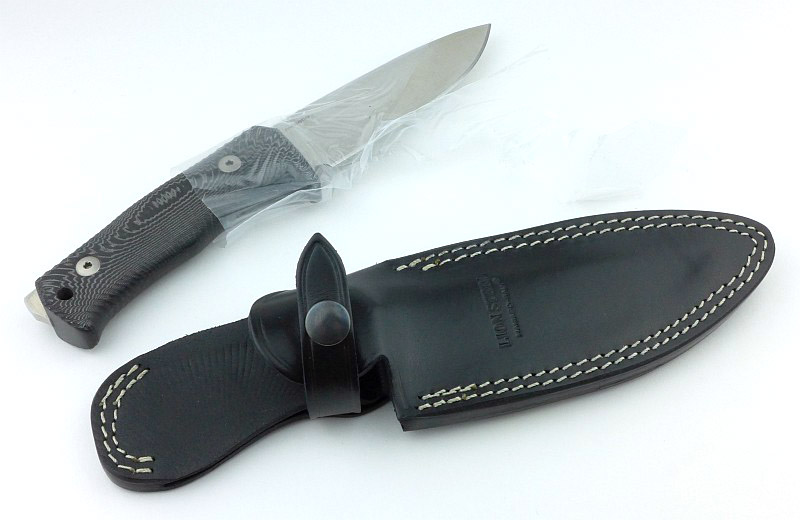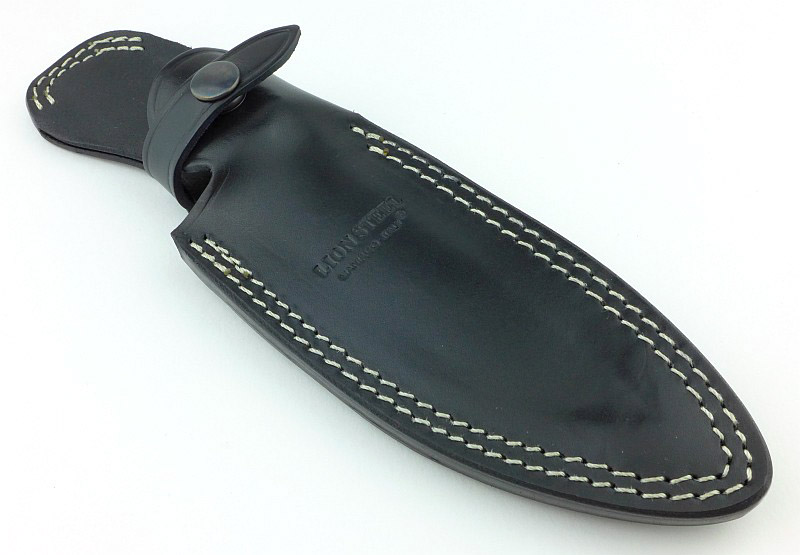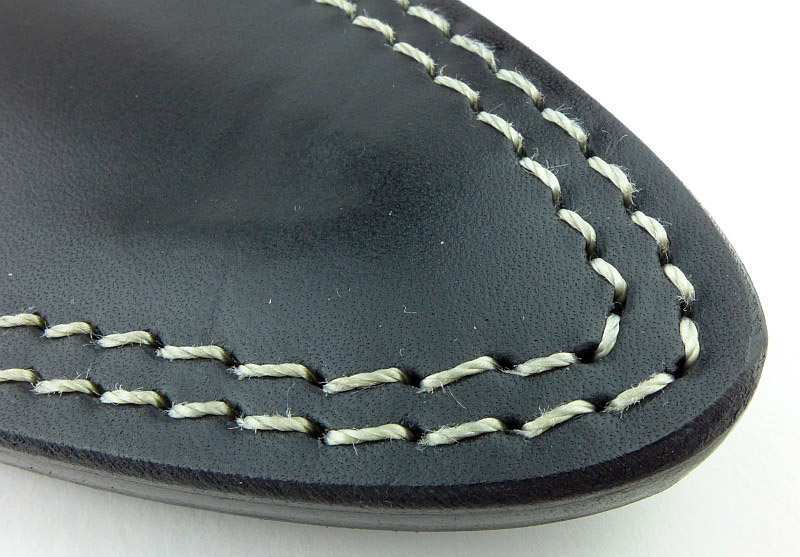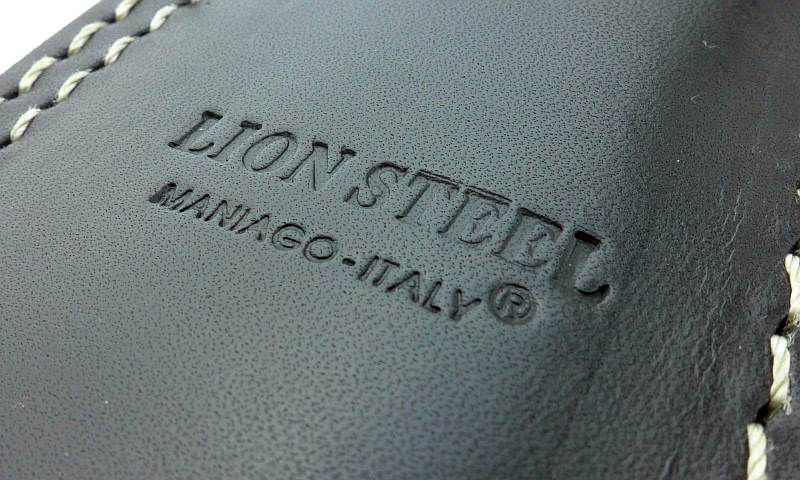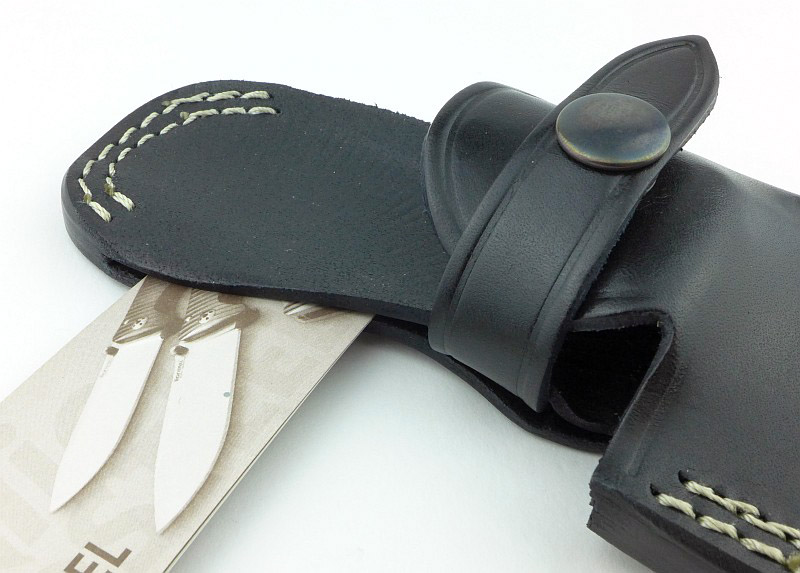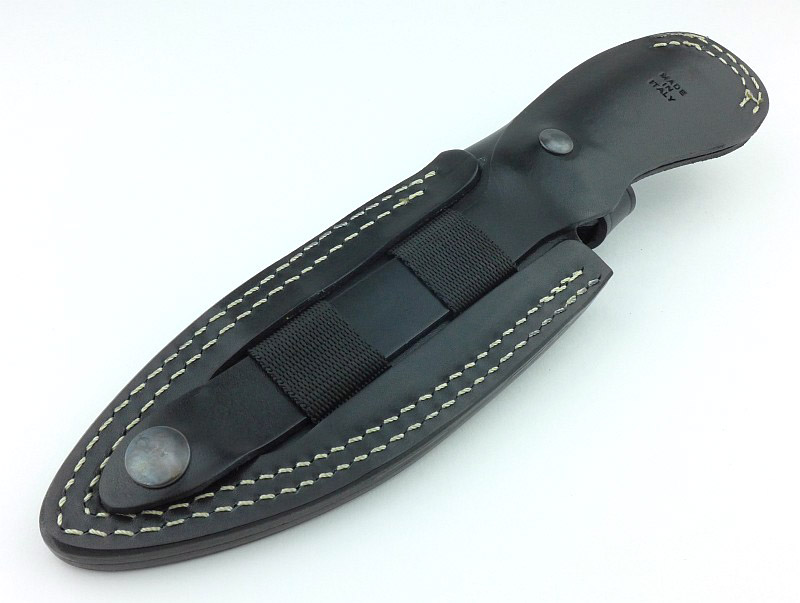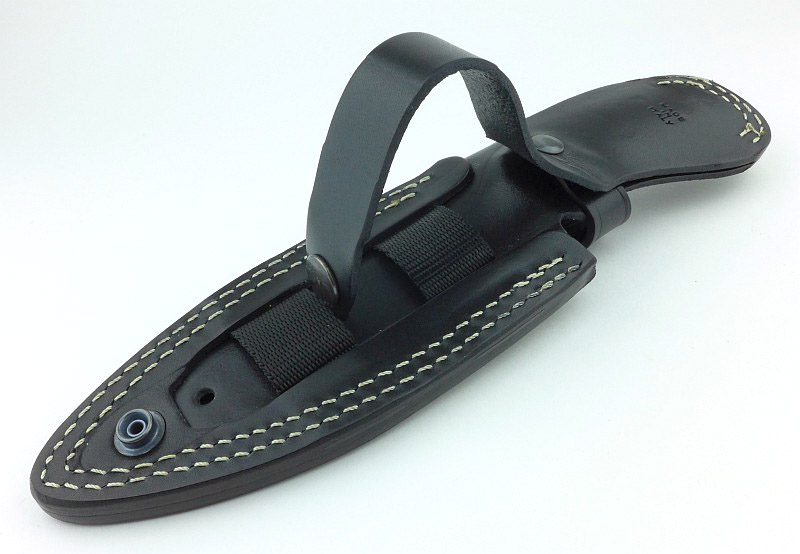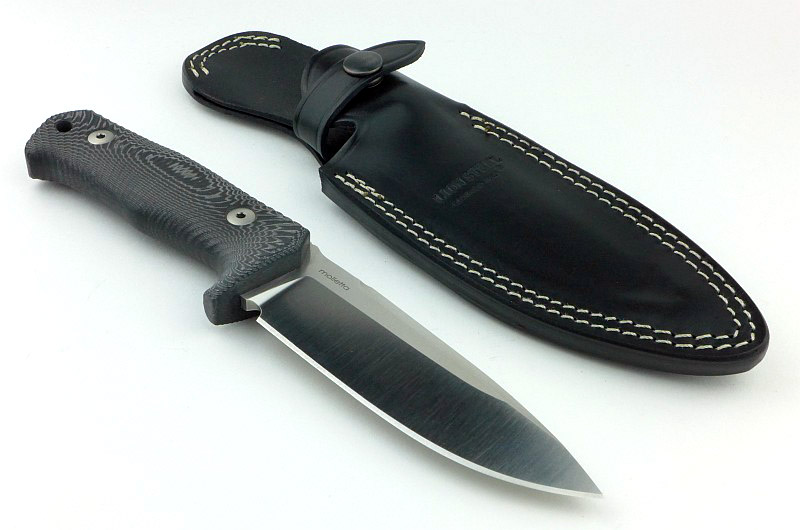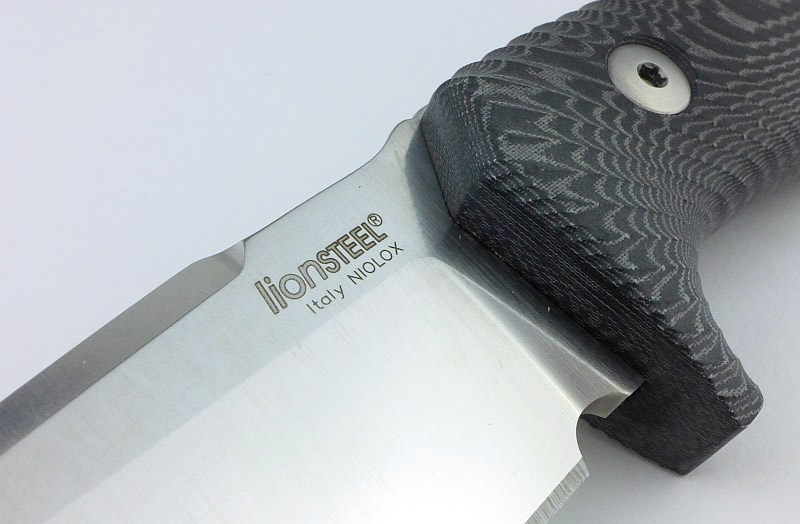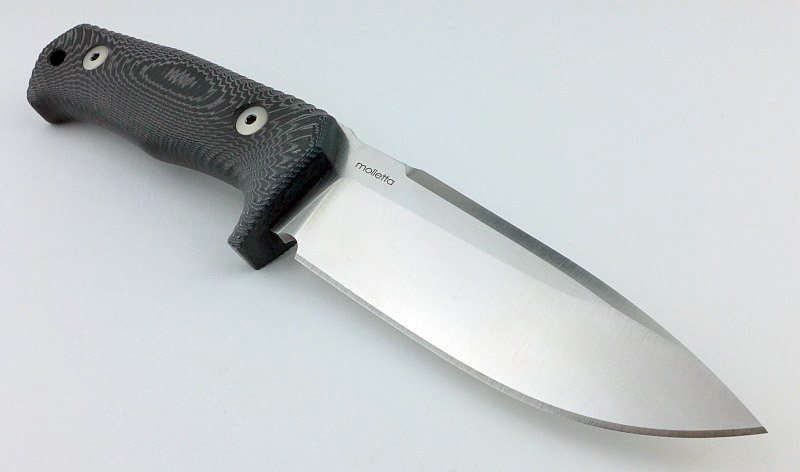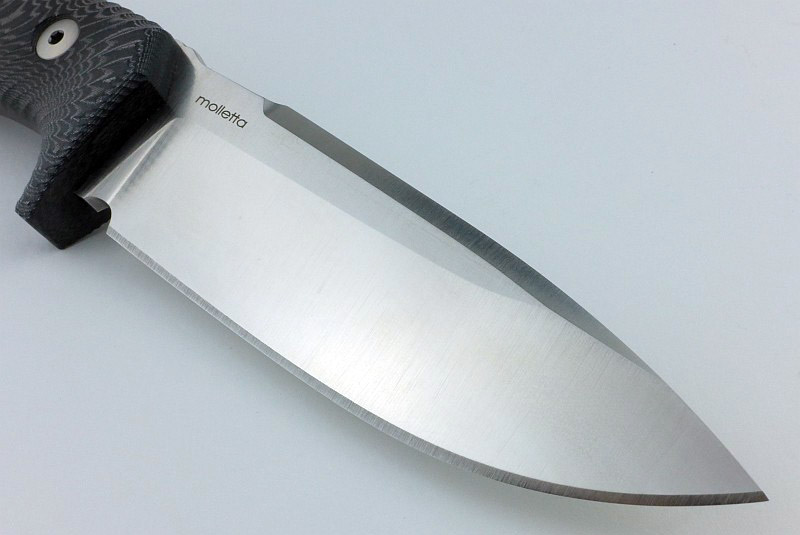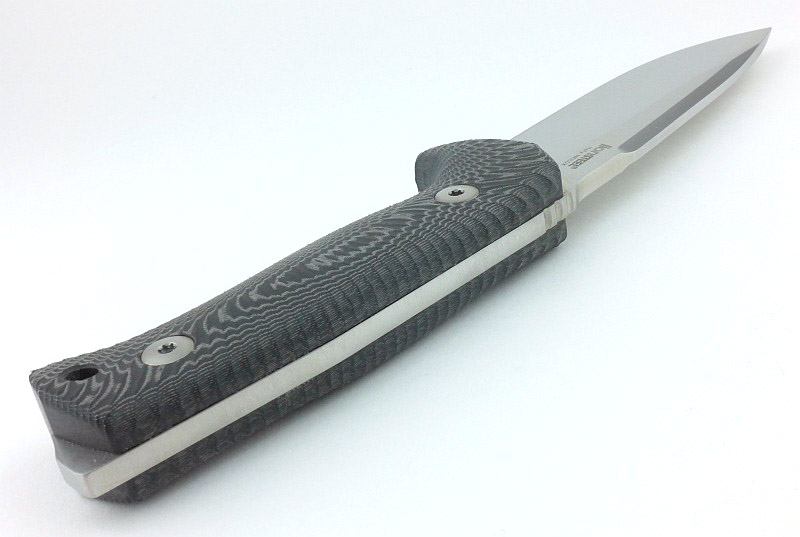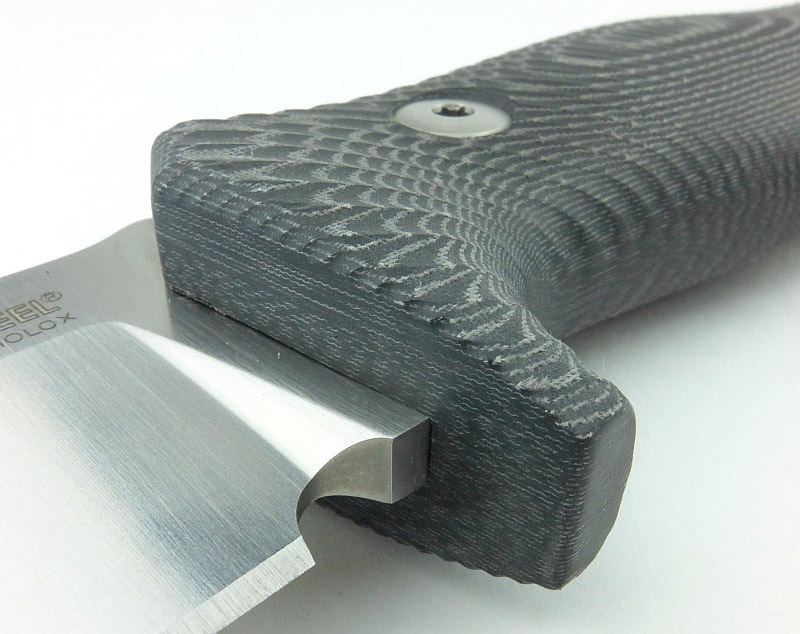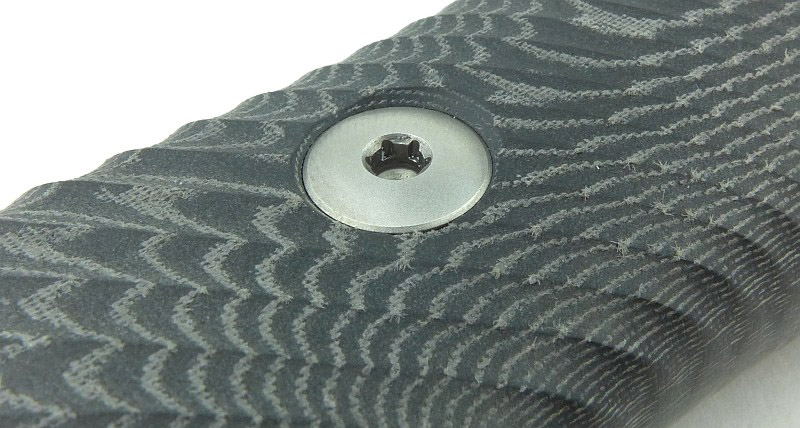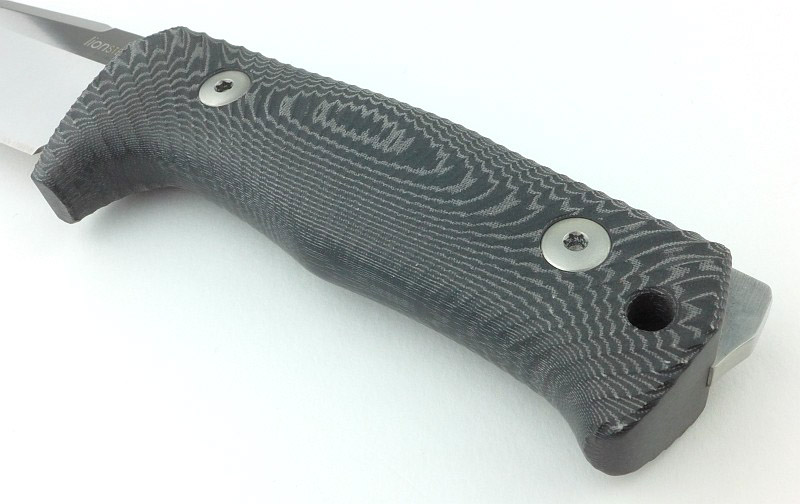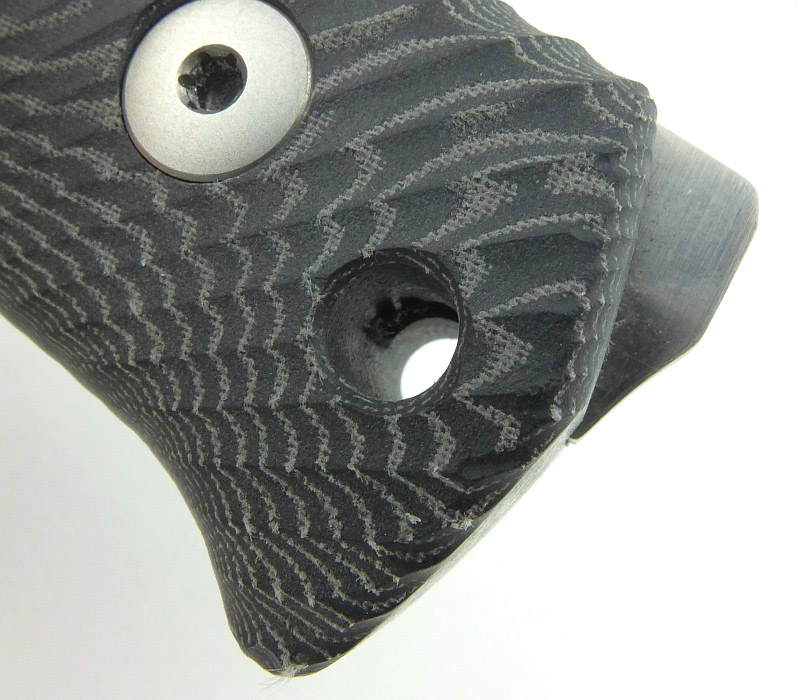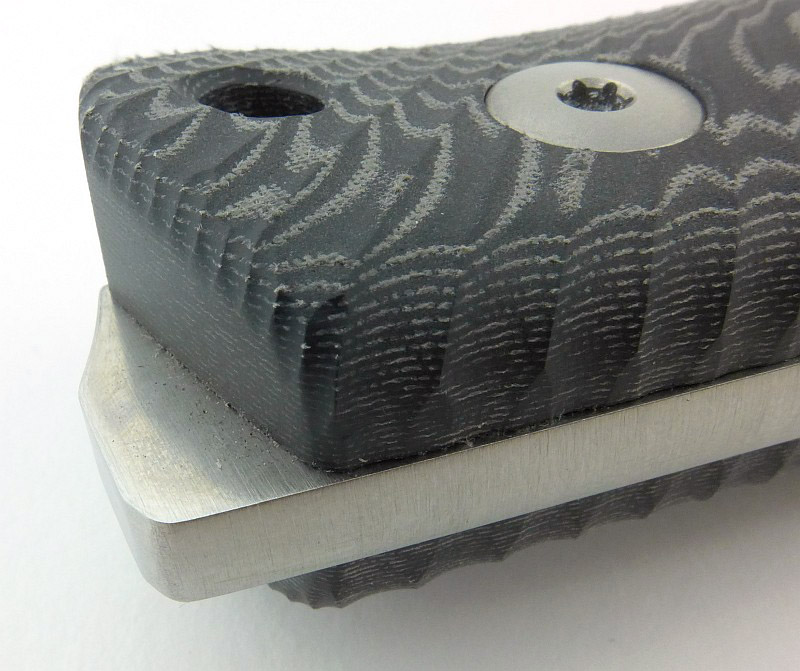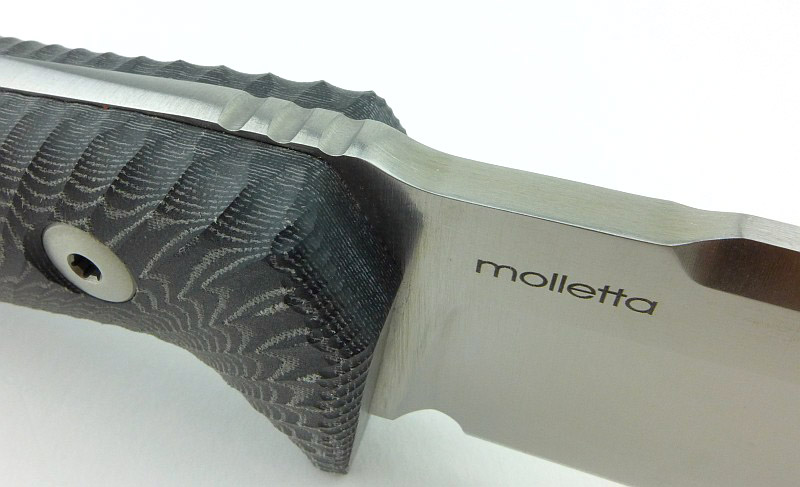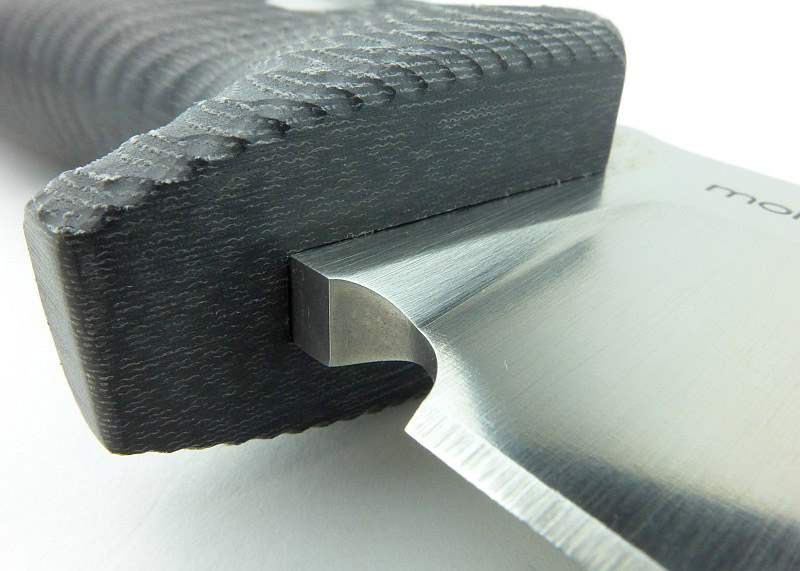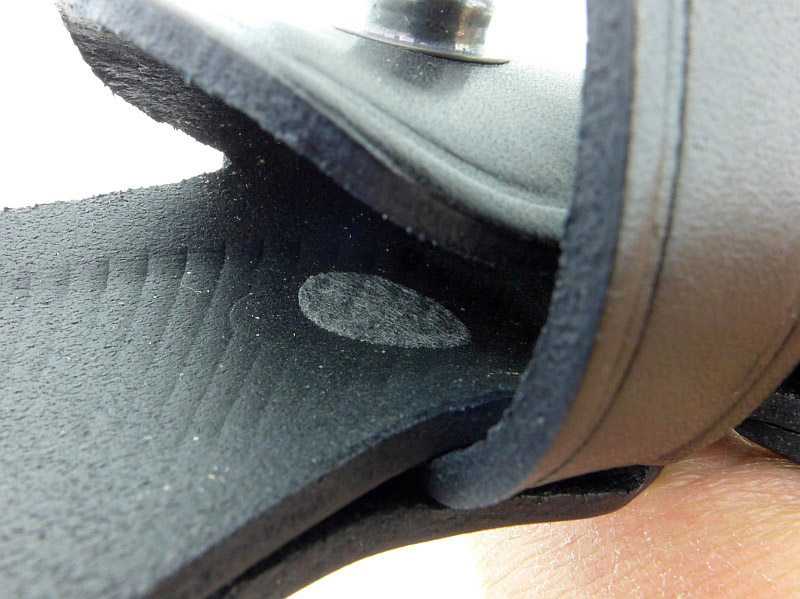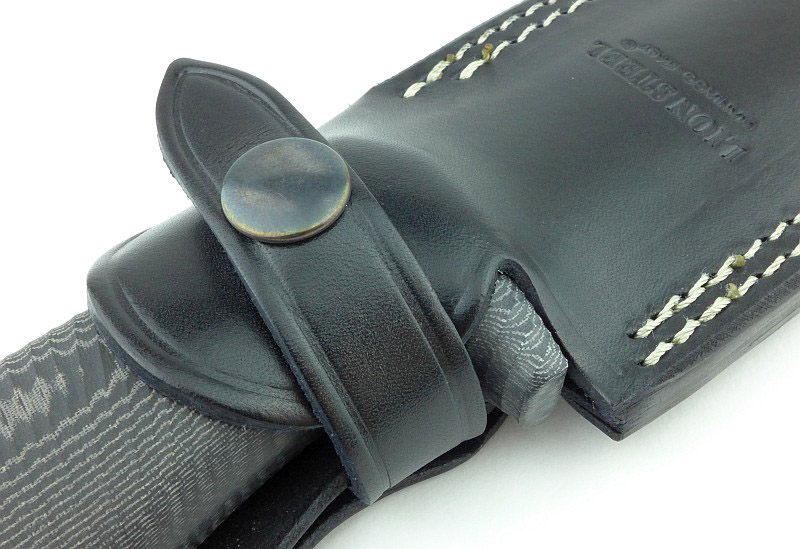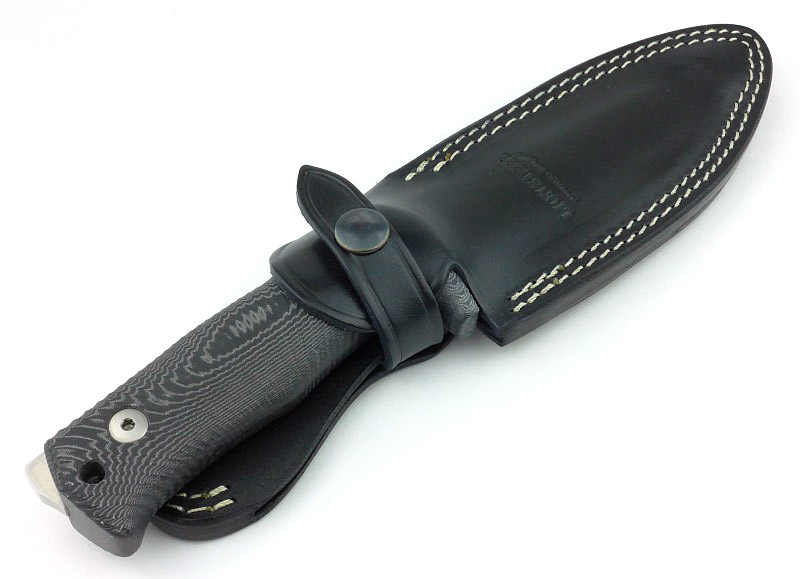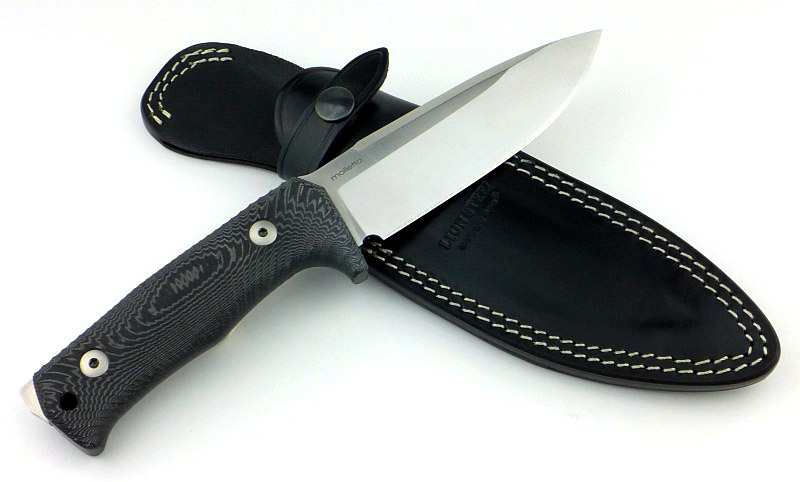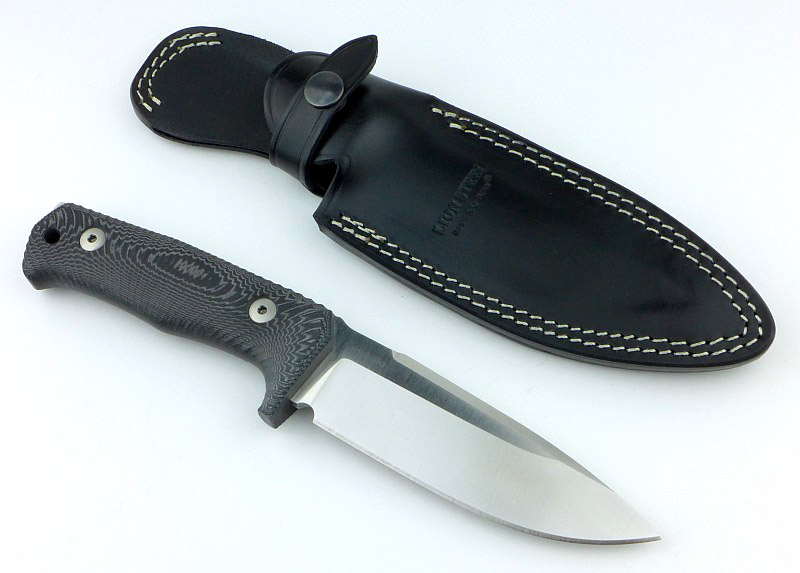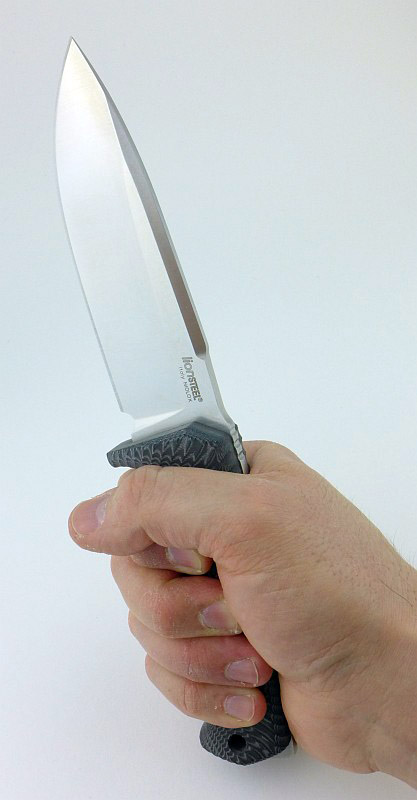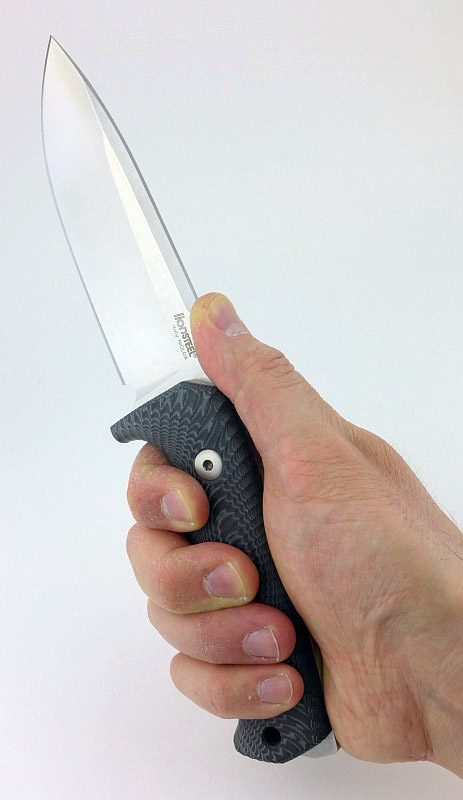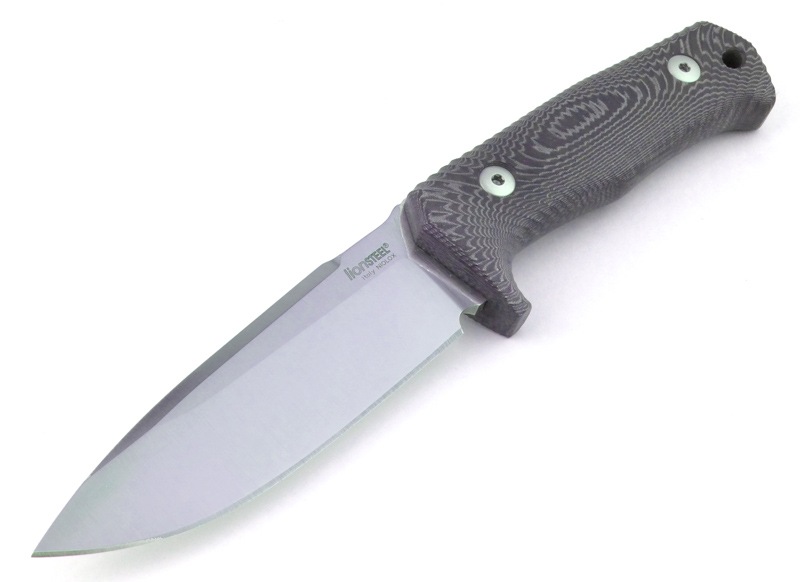Join me in this review of the lionSTEEL H1, to take in all the details of this superb EDC fixed blade knife designed by Tommaso Rumici. This specific knife is a display model from IWA 2022 so might show a few imperfections. The H1 has a M390 blade, black G10 handle with grip ring, standard leather sheath plus also shown in this review with the optional Kydex sheath.
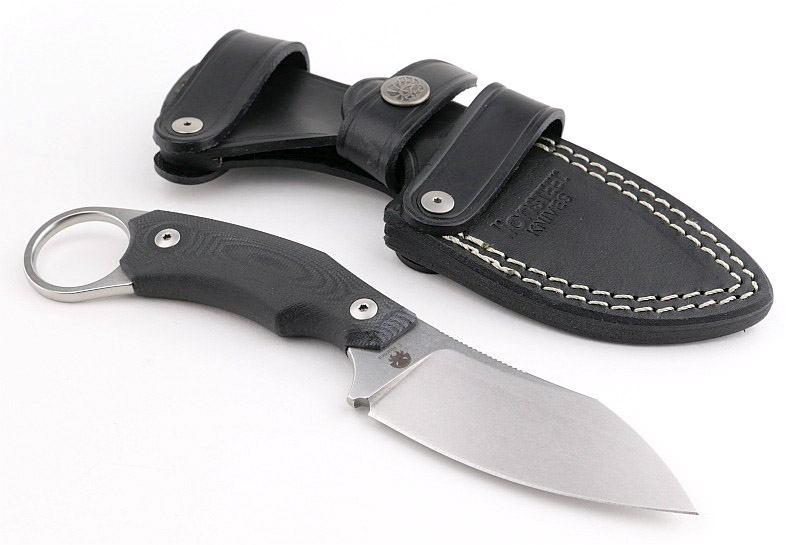
Video Overview
This video includes a close look round the H1, and then onto the measurements and specifications.
What’s in the box?:
As well as the standard H1 package, this review shows the optional Kydex sheath which is pictured next to the closed box. As standard, the H1 comes with the leather sheath and a lionSTEEL made keyring torx wrench.
A good look round the standard Leather Sheath – Things to look out for here are:
The H1’s standard leather sheath is packed full of features. Within the curved and flowing shaping of this sheath, it has a retaining strap secured with a press-stud, a ‘standard’ belt loop, along with two special loops that can be rotated and opened out to allow various belt or MOLLE carry configurations.
A good look round the optional Kydex Sheath – Things to look out for here are:
Giving you a more compact carry, the optional Kydex sheath has two special loops, like the leather sheath, that allow for various belt or MOLLE carry configurations, but without the fixed belt loop and retaining strap. The retaining strap is not needed due to the Kydex ‘clip in’ retention, so allowing for a much more streamlined sheath.
The details of the H1:
Starting off with the H1 sheathed in the leather sheath. A curvy knife in a curved and flowing sheath. Demonstrated in the last of the photos of the sheathed knife, if you are using the fixed belt loop, and if you wanted to tie-in the end of the handle tightly so it can’t catch on anything, you can swing the top loop over the end of the grip ring; not something you would do all the time, but an option.
The remaining photos take in details like the engravings, plunge line, jimping, grip ring finish, handle shaping/milling/texture, plus the overall lines of this knife.
The Blade and Handle – Detailed Measurements:
For full details of the tests and measurements carried out and an explanation of the results, see the page – Knife Technical Testing – How It’s Done.
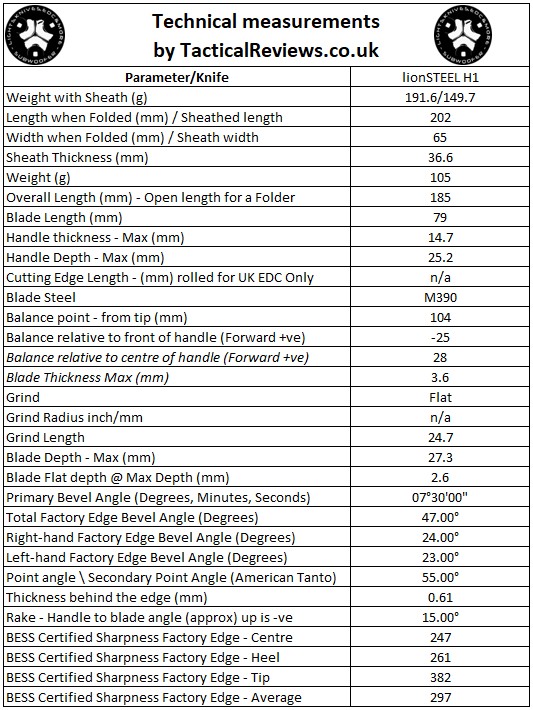
What is it like to use?
Designed to combine the secure handling of the karambit’s grip ring with a knife blade much better suited to daily EDC tasks, this make the H1 an unusual shape that you might not immediately be drawn to.
Although I started with the two galleries in this section the other way round, I decided to look at the personal carry aspect first. Shown earlier in the review, the H1 can be MOLLE carried, so this is about carry directly on your person using the belt and additional loops on both the leather and Kydex sheathes.
For me the least successful carry is the standard drop belt loop. With the angles set into the sheath, the presentation is very awkward for me, and with the leather wrapping round the handle, re-sheathing the knife tends to result in cutting into the sheath each and every time. It is quick to deploy, but not to re-sheath.
Moving swiftly to horizontal carry and suddenly everything works much better. For the leather sheath you can mount it on your hip facing backwards. The leather sheath doesn’t really work for back carry, due to the retaining strap (this is where the kydex sheath really shines).
(Just to mention these photos are all for right-handed drawing.)
Last up is the kydex sheath on hip and back carry positions. Actually for the back carry I would have set the loops so that one was each side of the trouser belt loop to provide stability for drawing and re-sheathing. The lower profile kydex sheath is excellent, and shines in the back carry position.
So we’ve looked at carry, and now onto handling of the H1. Yes the H1 has a grip ring, but you don’t have to put a finger through it, you can also hold it like a standard grip and use the width of the ring to control the angle the blade presents. Worth remembering and not always putting a finger through the ring.
As you can see, though I take XL size gloves, the H1 is quite a compact knife. With the curve of the blade and the jimping on the spine, the H1 sits so well in the hand making it feel a simple extension of you.
Reverse grips are as natural as forward grip, and the ring is a size and finish that makes it super comfortable however you take hold of it.
I’ve always loved lionSTEEL’s leather sheaths, and the H1’s is a very good sheath. For me though, the optional Kydex sheath takes the H1 into a different league. I would recommend getting it. (If lionSTEEL could offer a sheath choice when buying so you could get the H1 without the leather sheath and just the Kydex one, all the better.) The slim H1 definitely benefits from the much slimmer Kydex sheath. This sheath also allows for ‘in pocket’ carry which the bulkier leather sheath does not.
Handling is where the H1 really excels with the versatile grip ring and curving handle and blade shape that fits into the hand beautifully. Between the H1 and H2 (the H2 which has a drop point blade), the sheep’s foot style blade shape presets the tip of the knife very well for point work, and the curved cutting edge slices easily.
Review Summary
The views expressed in this summary table are from the point of view of the reviewer’s personal use. I am not a member of the armed forces and cannot comment on its use beyond a cutting tool or field/hunting knife.
Something that might be a ‘pro’ for one user can be a ‘con’ for another, so the comments are categorised based on my requirements. You should consider all points and if they could be beneficial to you.
_______________________________________________
What doesn’t work so well for me
_______________________________________________
Relatively bulky leather sheath.
Awkward angle of standard belt loop.
_______________________________________________
Things I like
_______________________________________________
Highly ergonomic.
Grip ring provides security.
Optional Kydex sheath (recommended).
M390 blade steel.
Slim and easy to carry.
Horizontal belt mounting.
MOLLE compatible.
Adaptable sheath mounting loops.
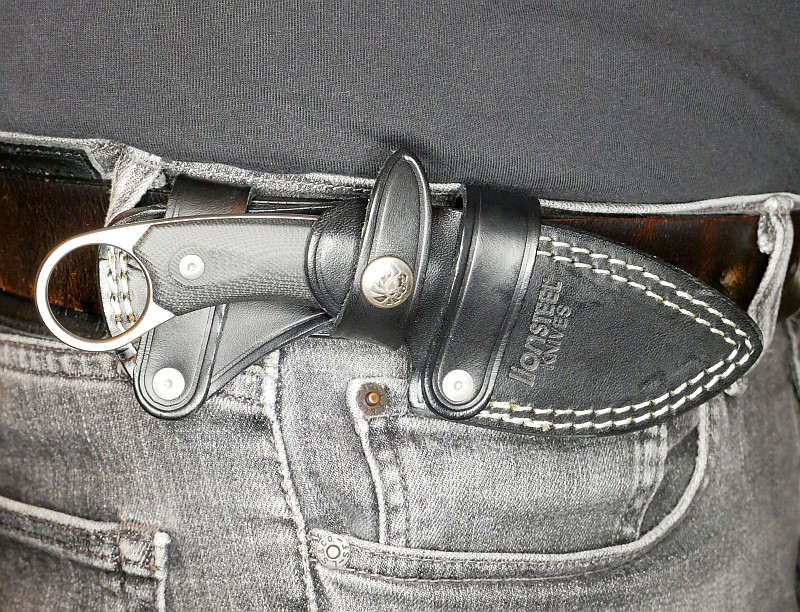
Discussing the Review:
The ideal place to discuss this review is on the Tactical Reviews Facebook Page 
Please visit there and start/join the conversation.
As well as the Tactical Reviews Facebook Page, please consider visiting one of the following to start/join in any discussion.
BladeForums – Knife Reviews (US based Forum for Knife Discussion)
CandlePowerForums – Knife Reviews Section (Largest and Friendliest Flashlight Community Forum)

